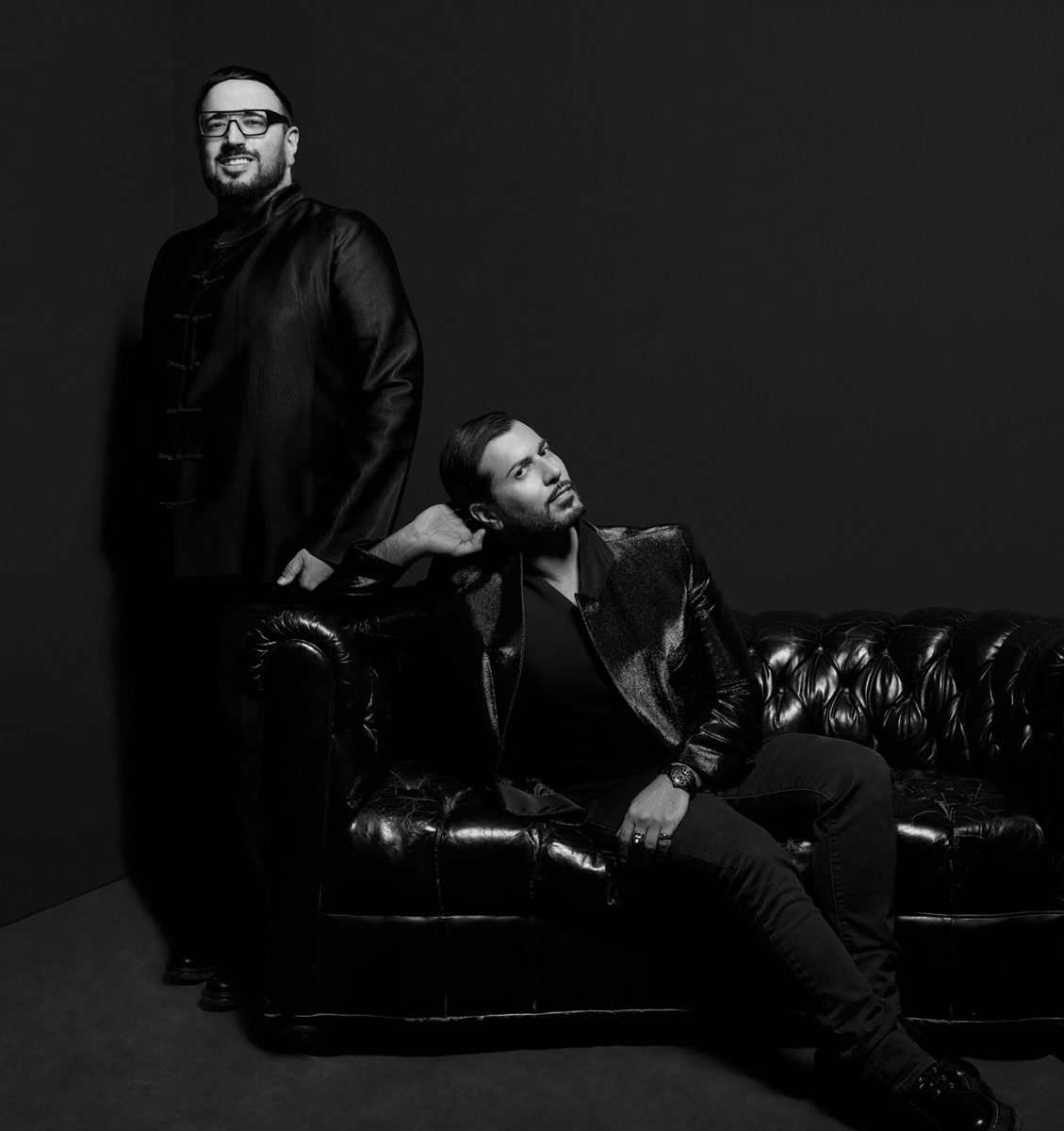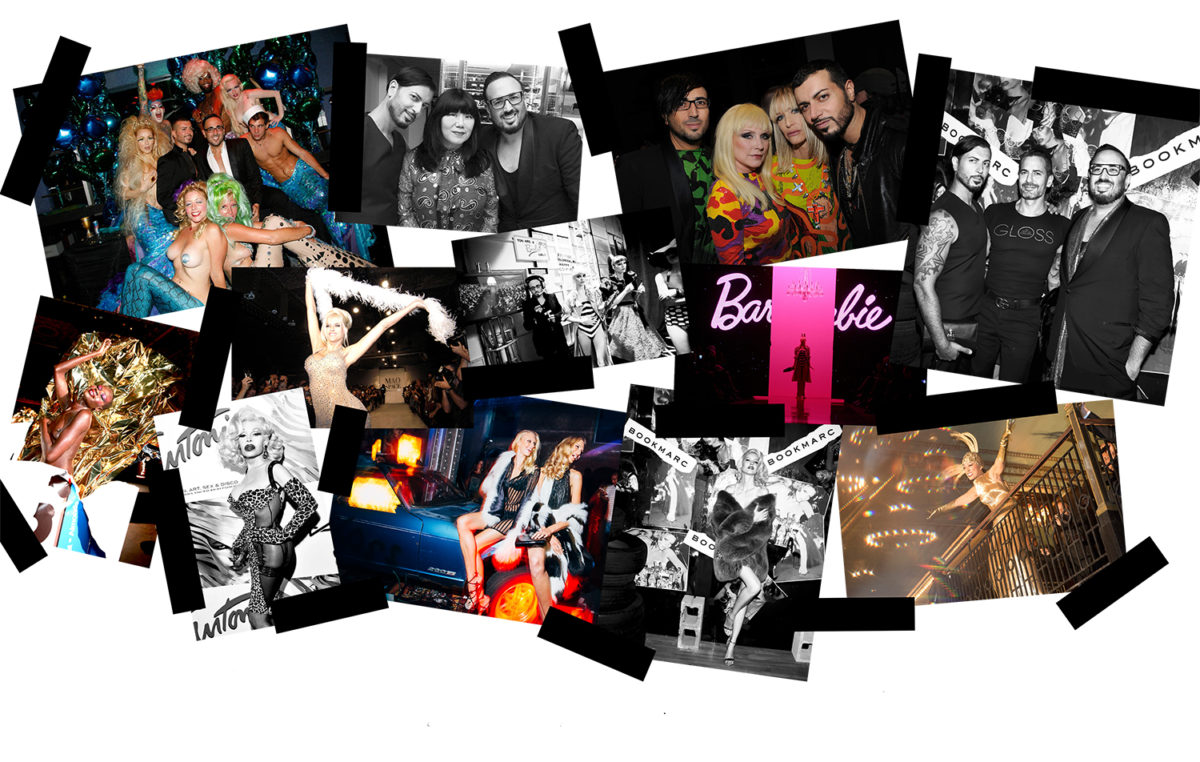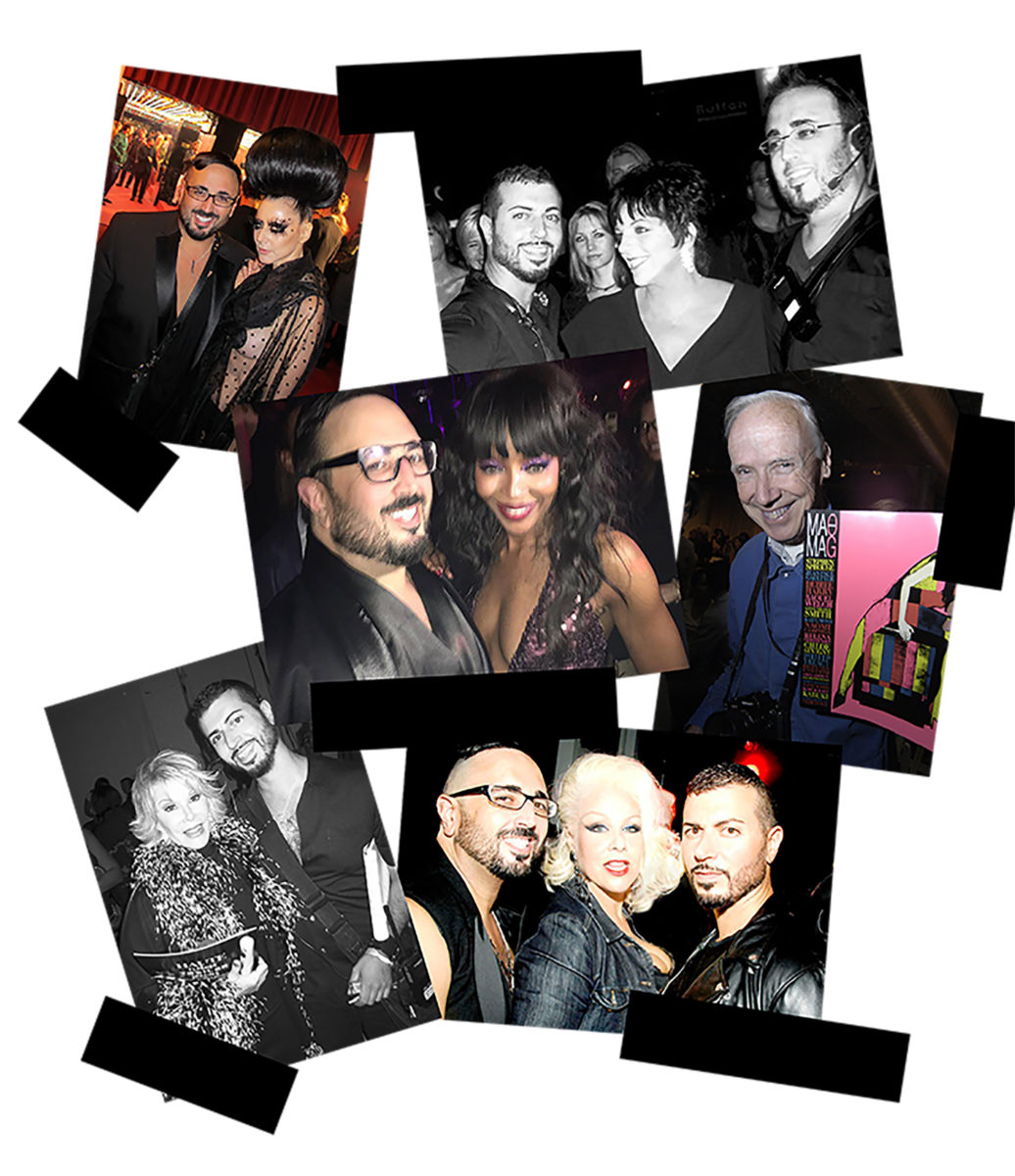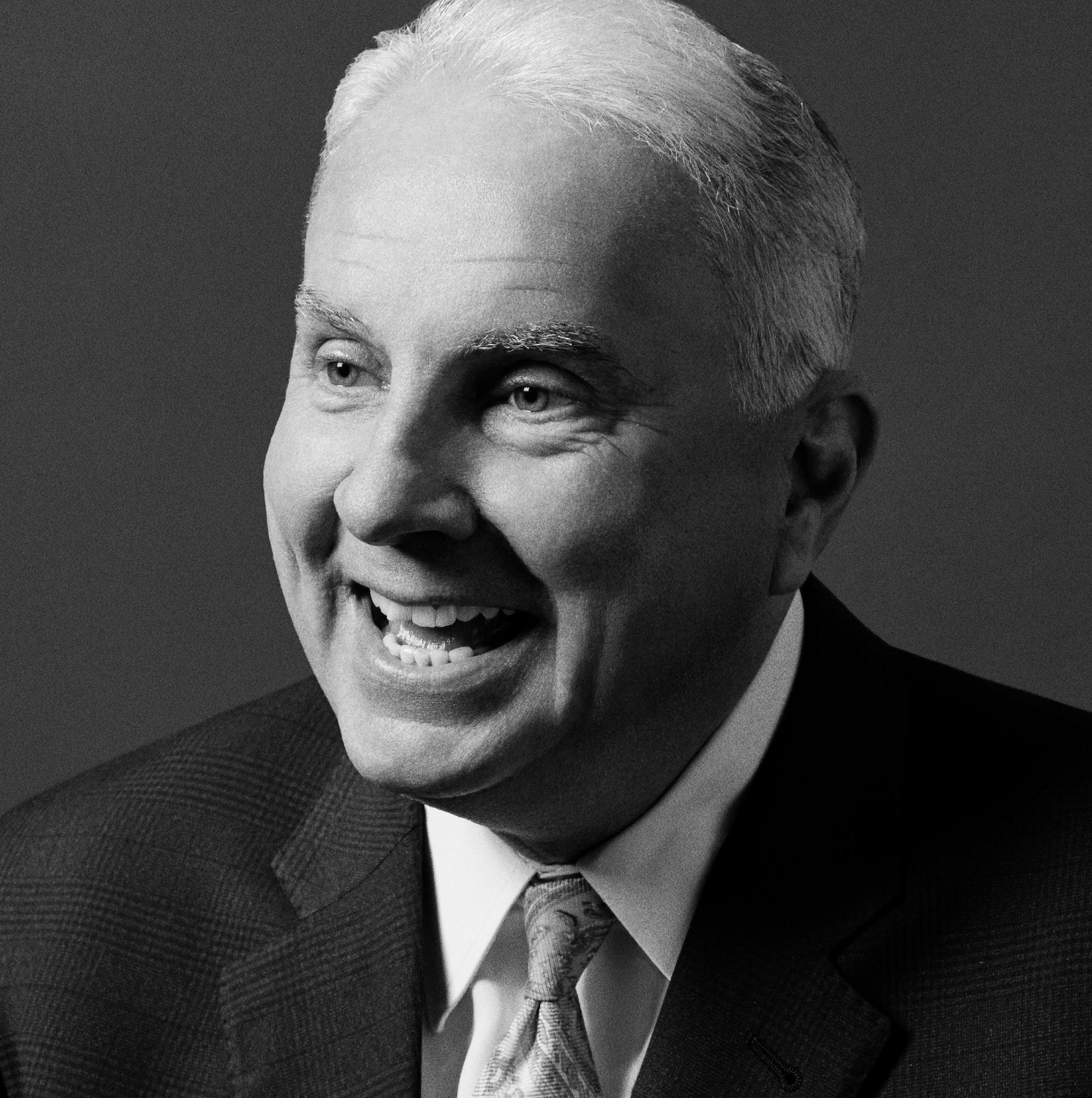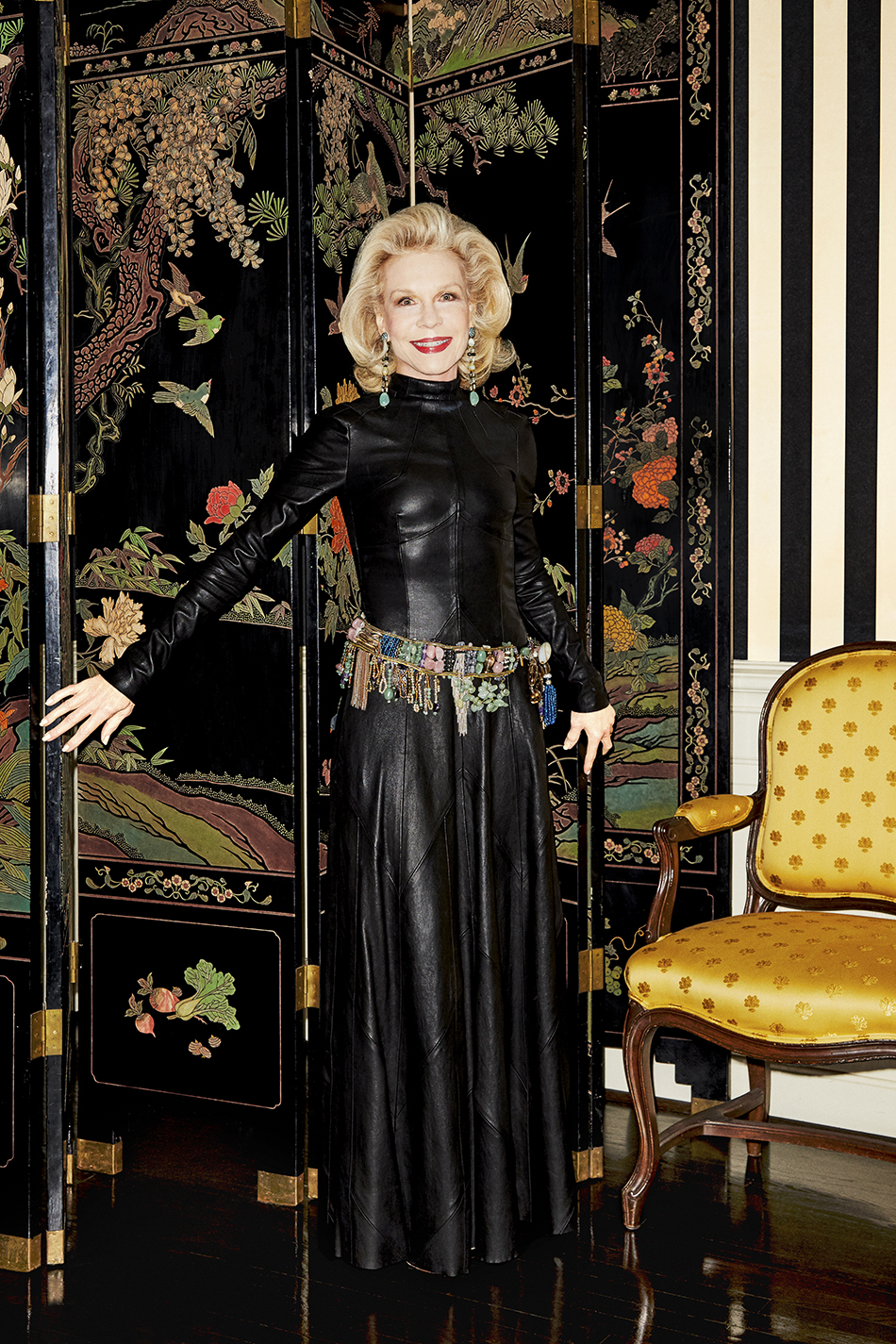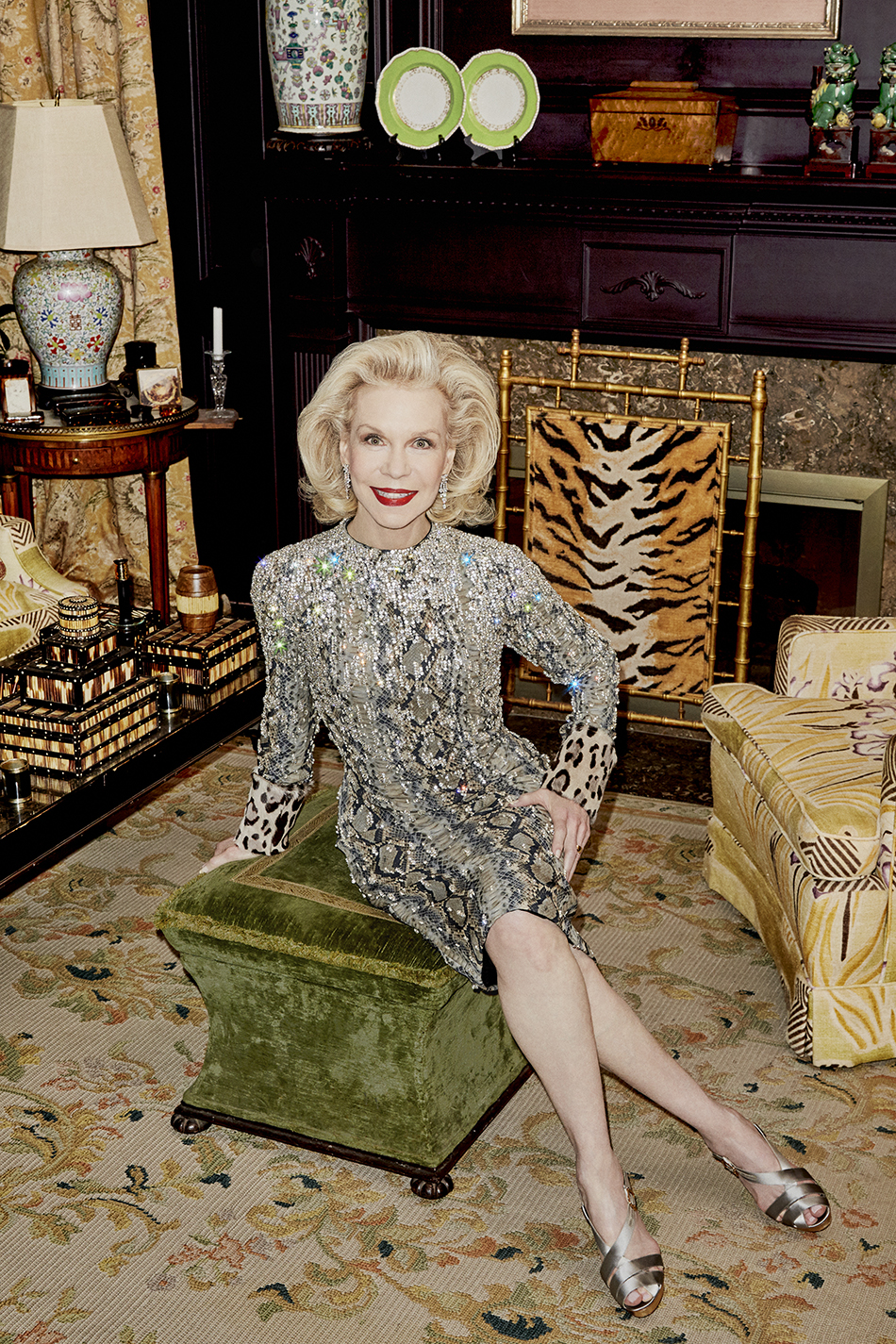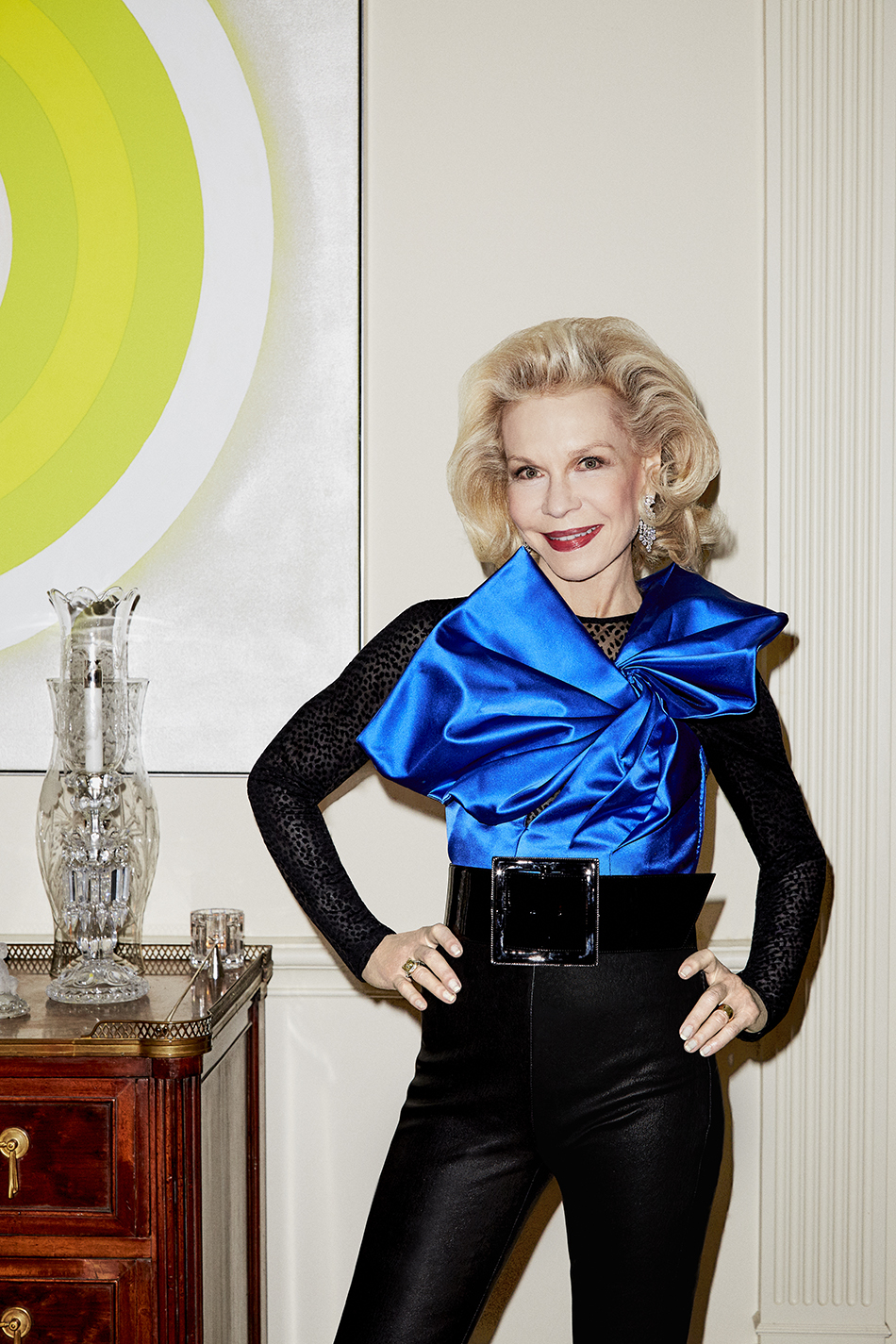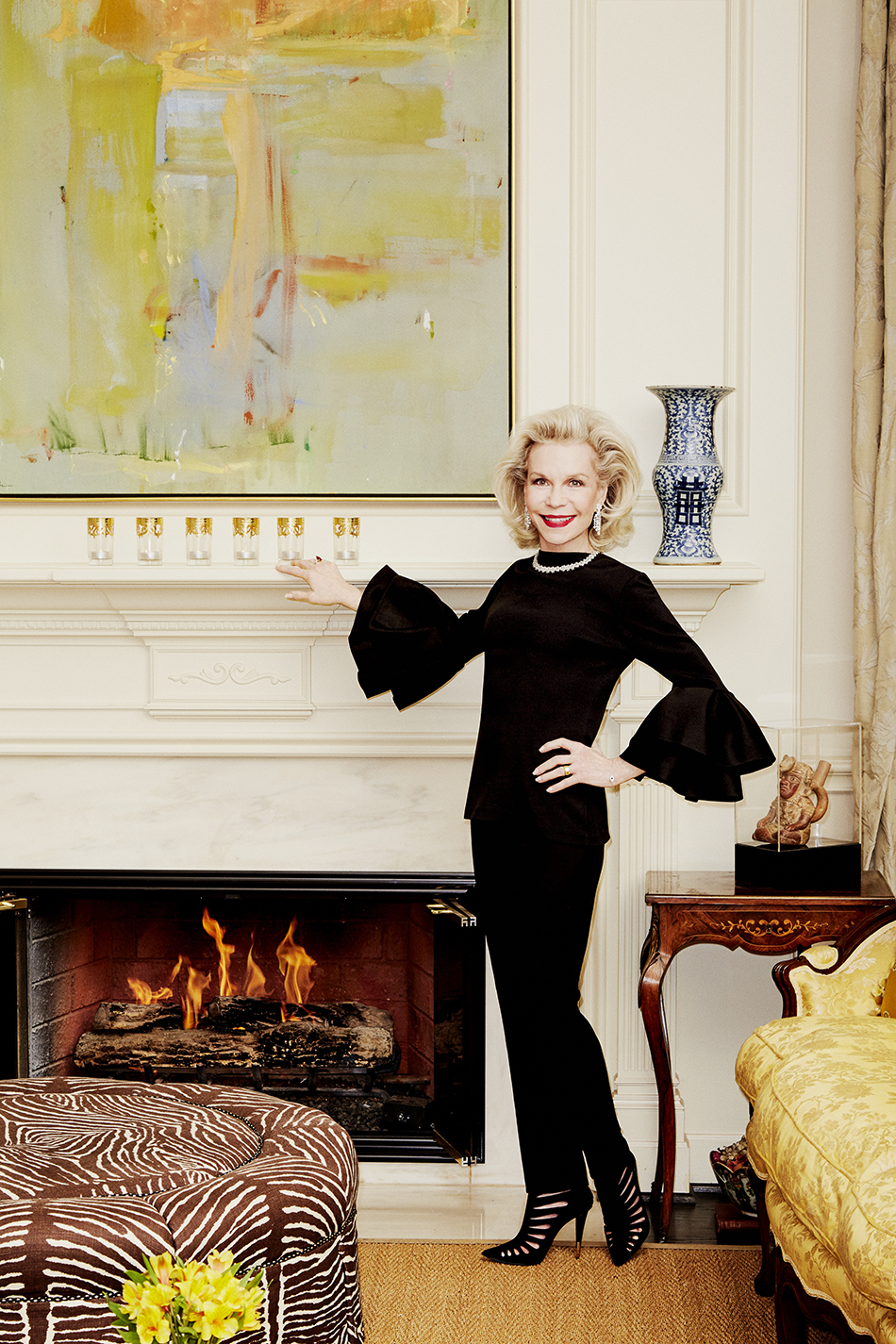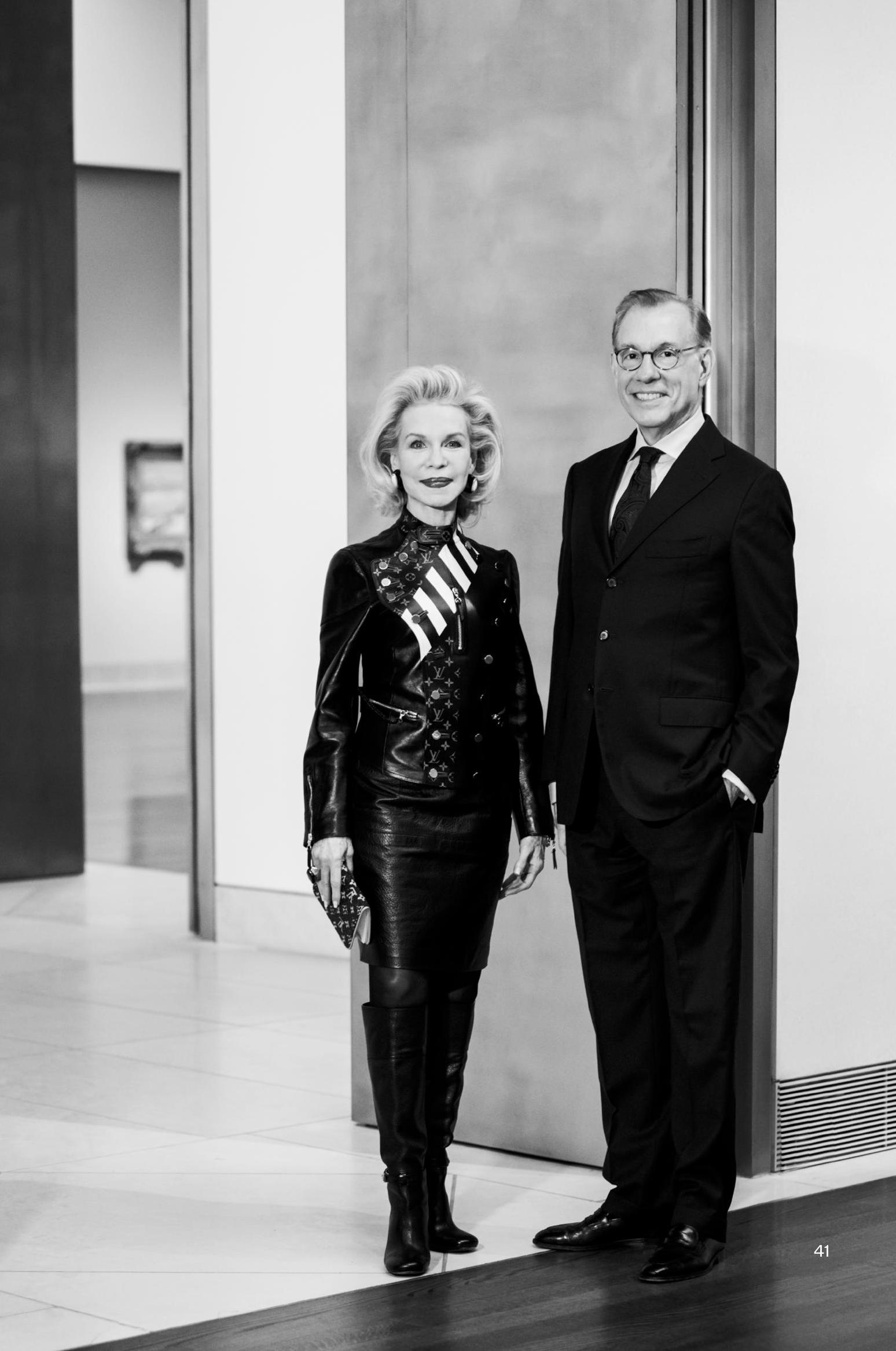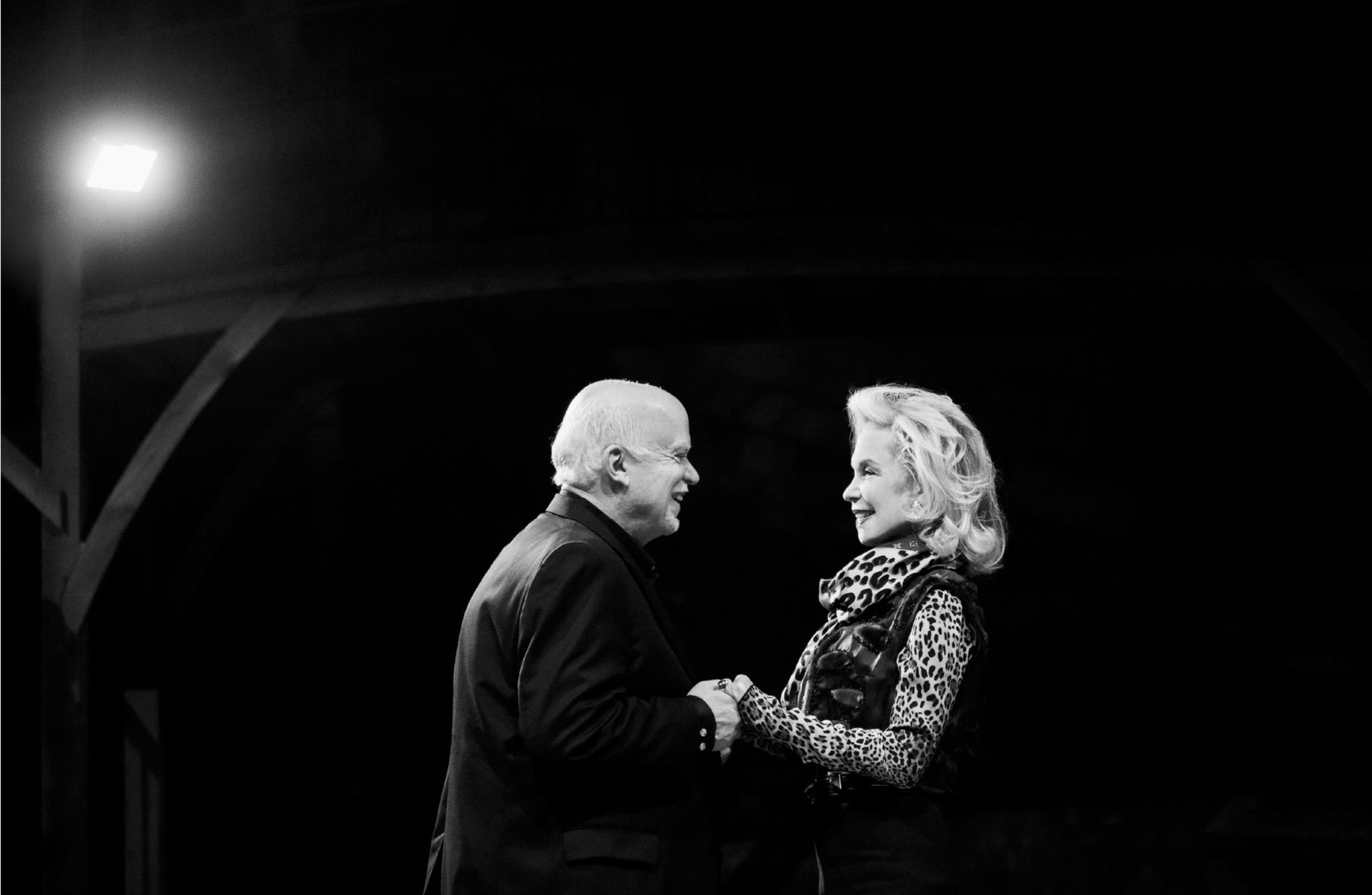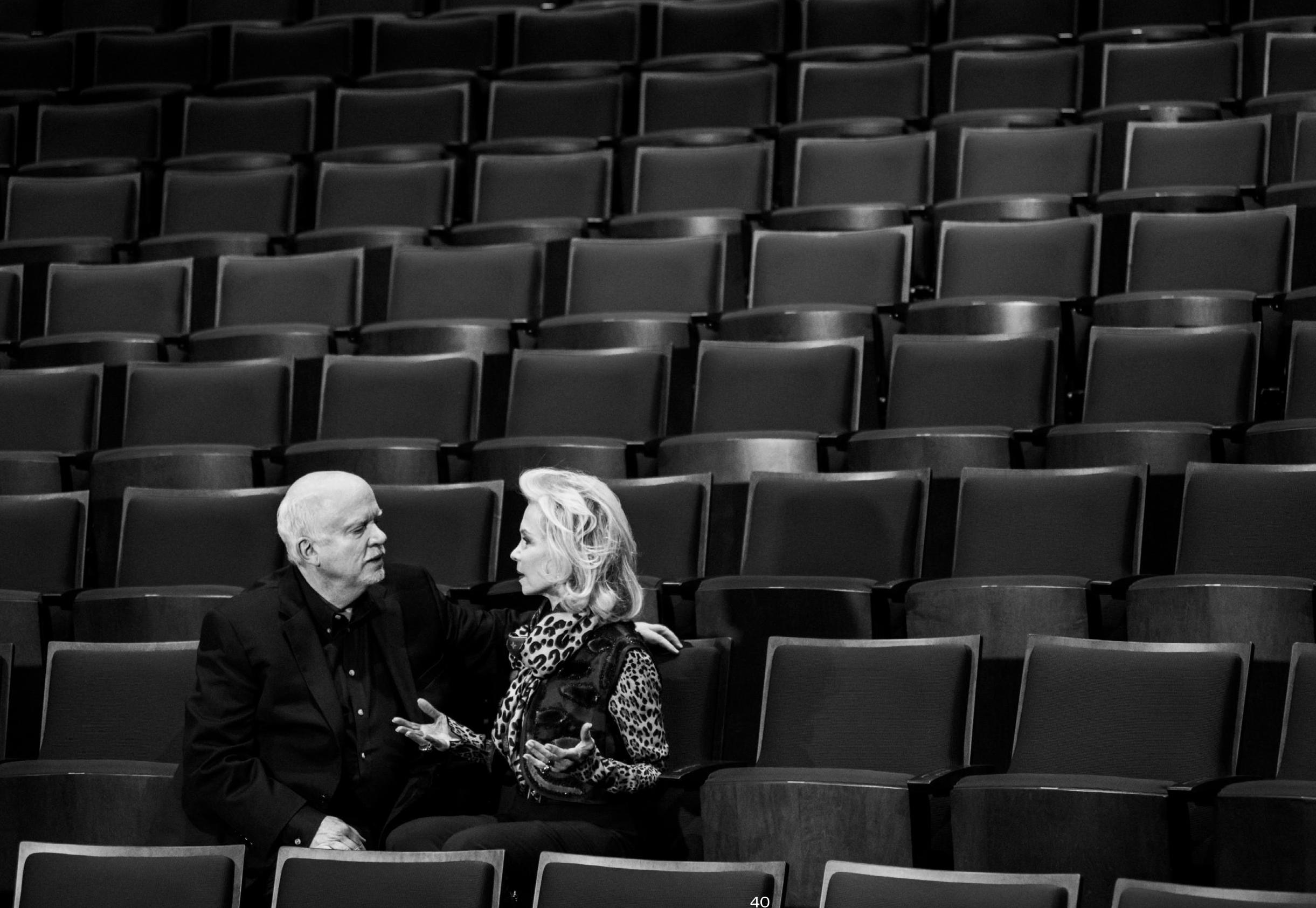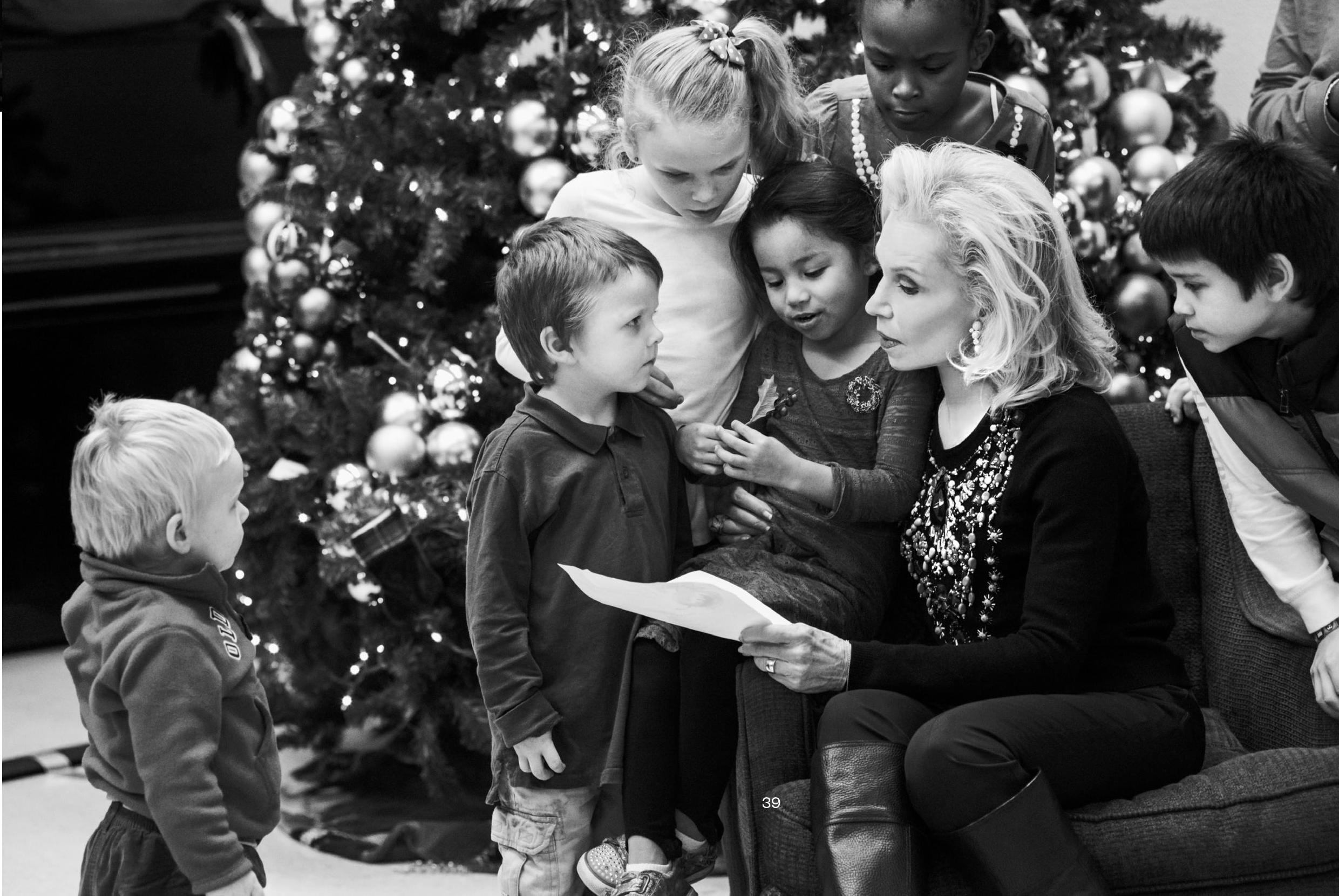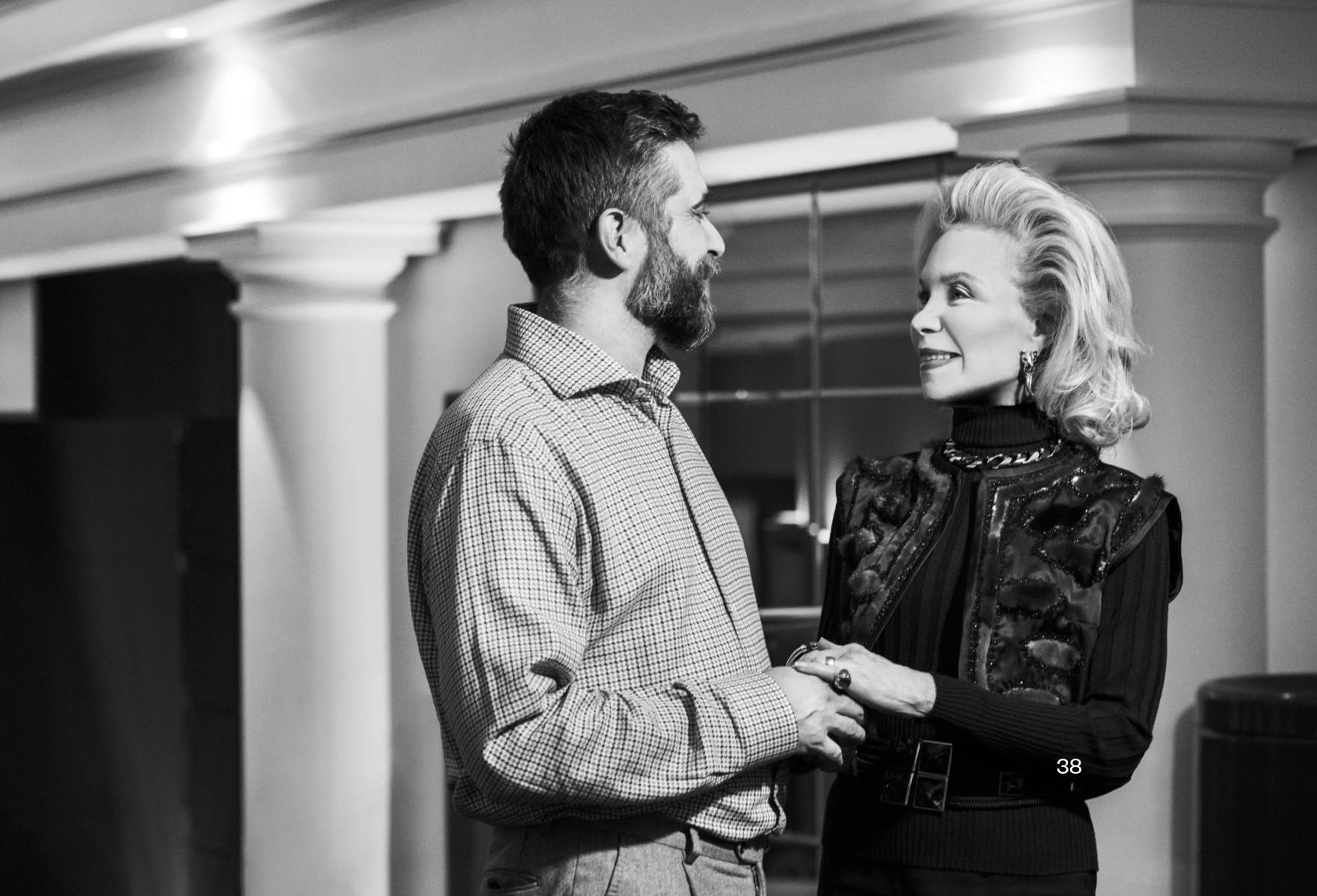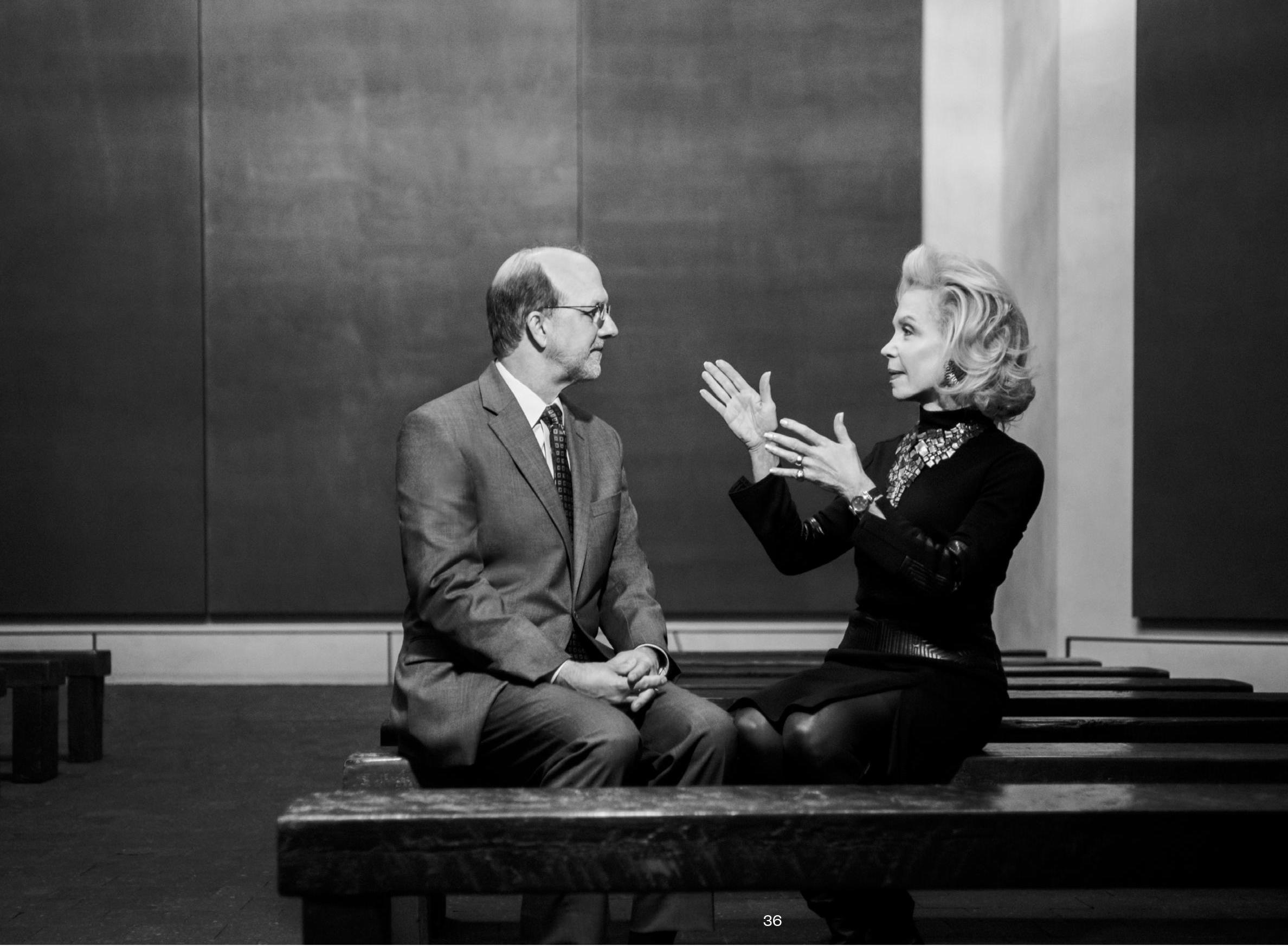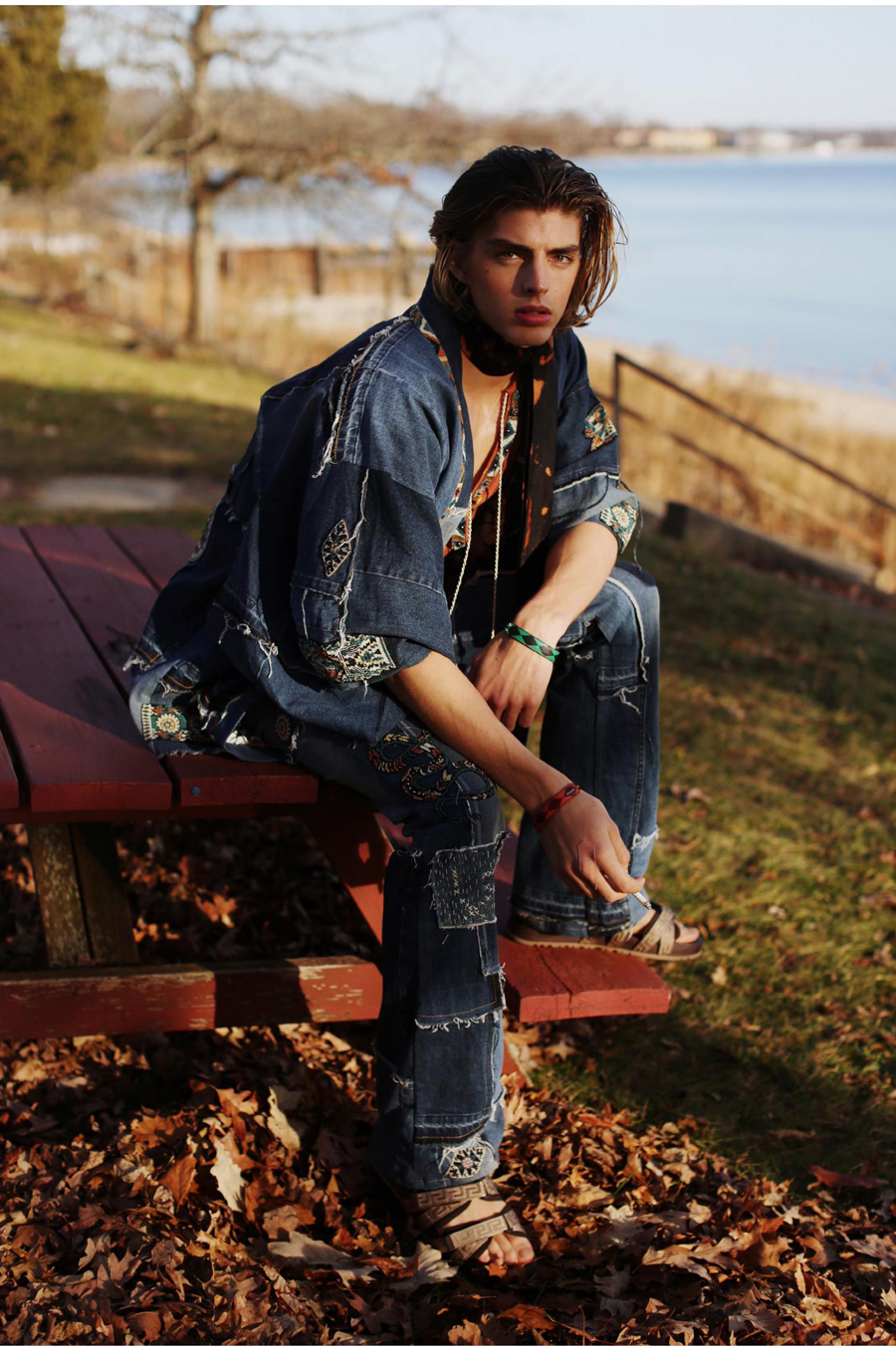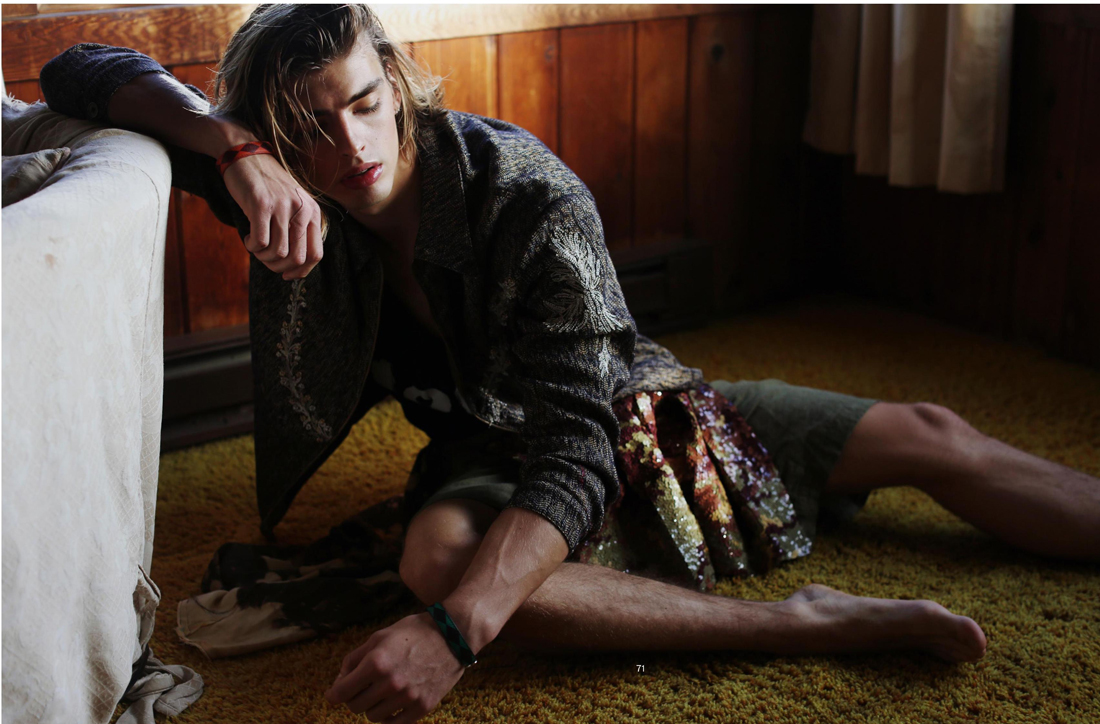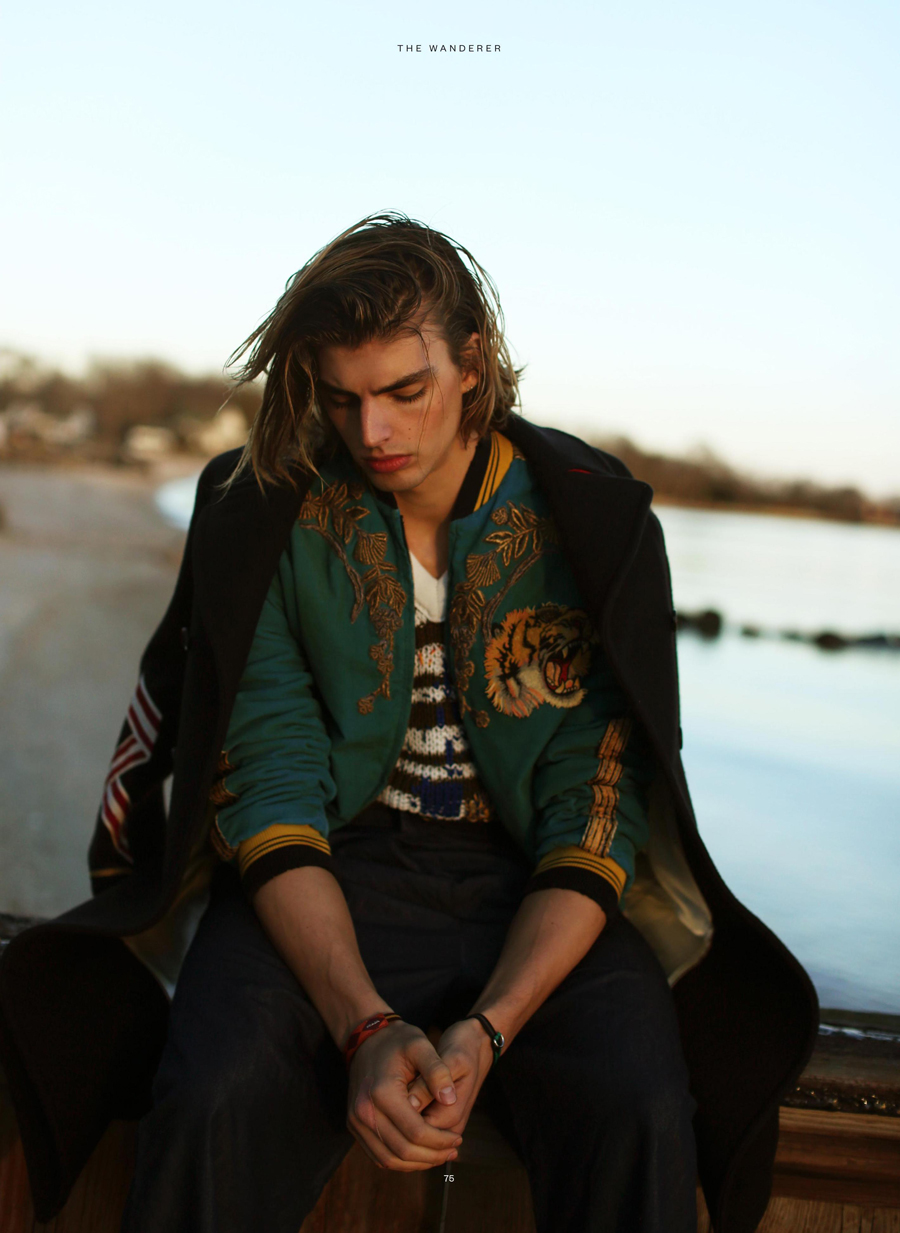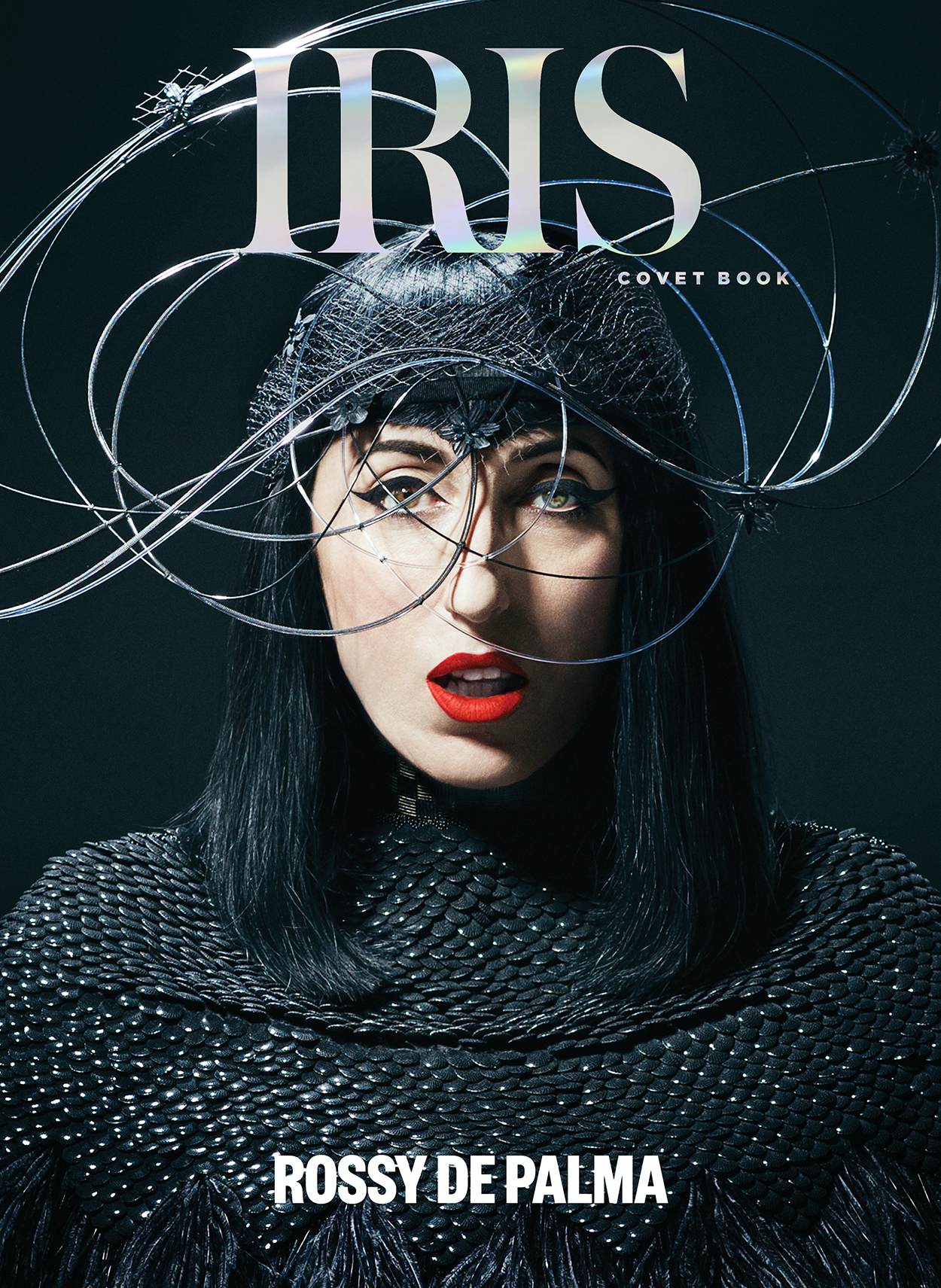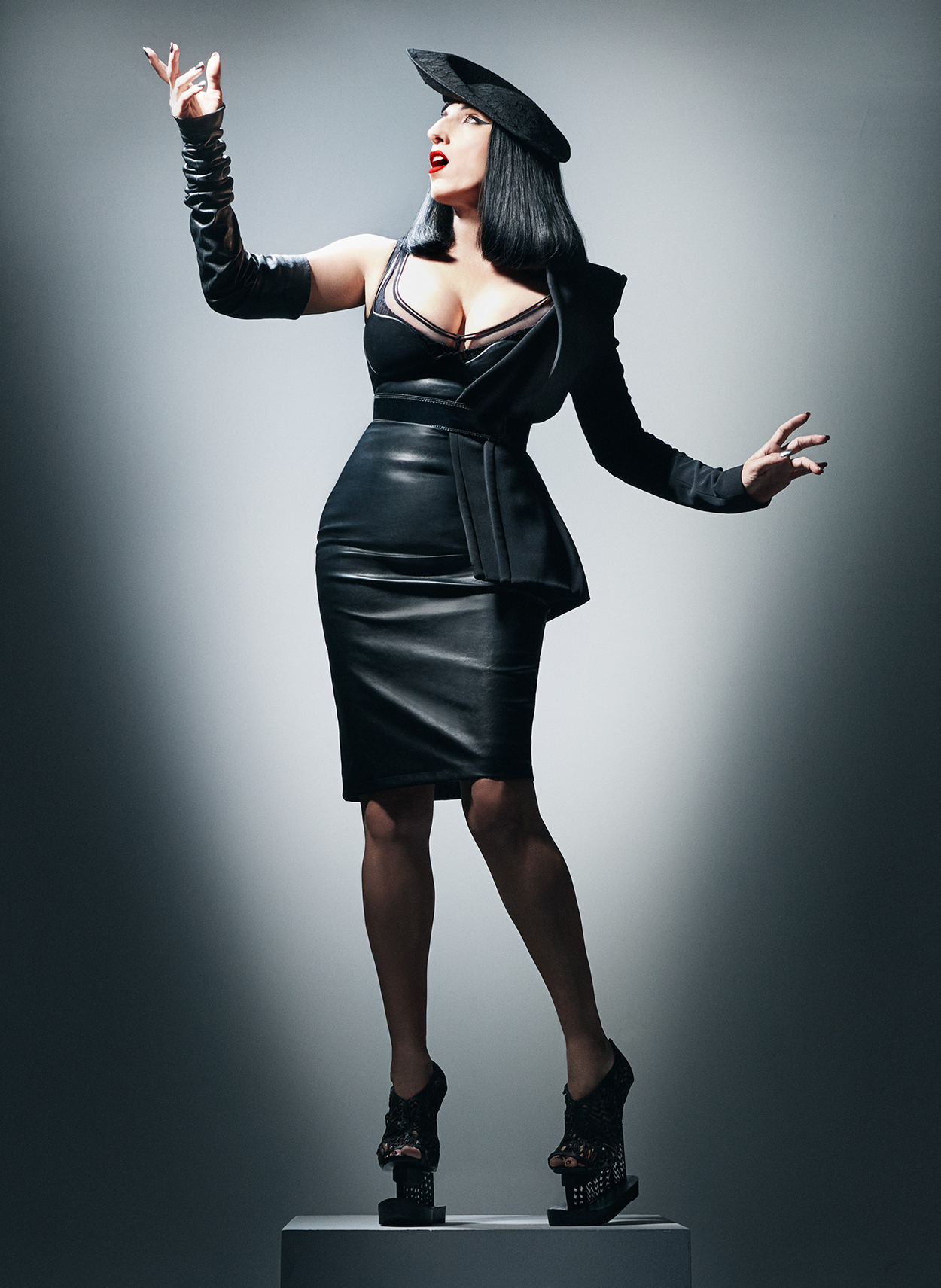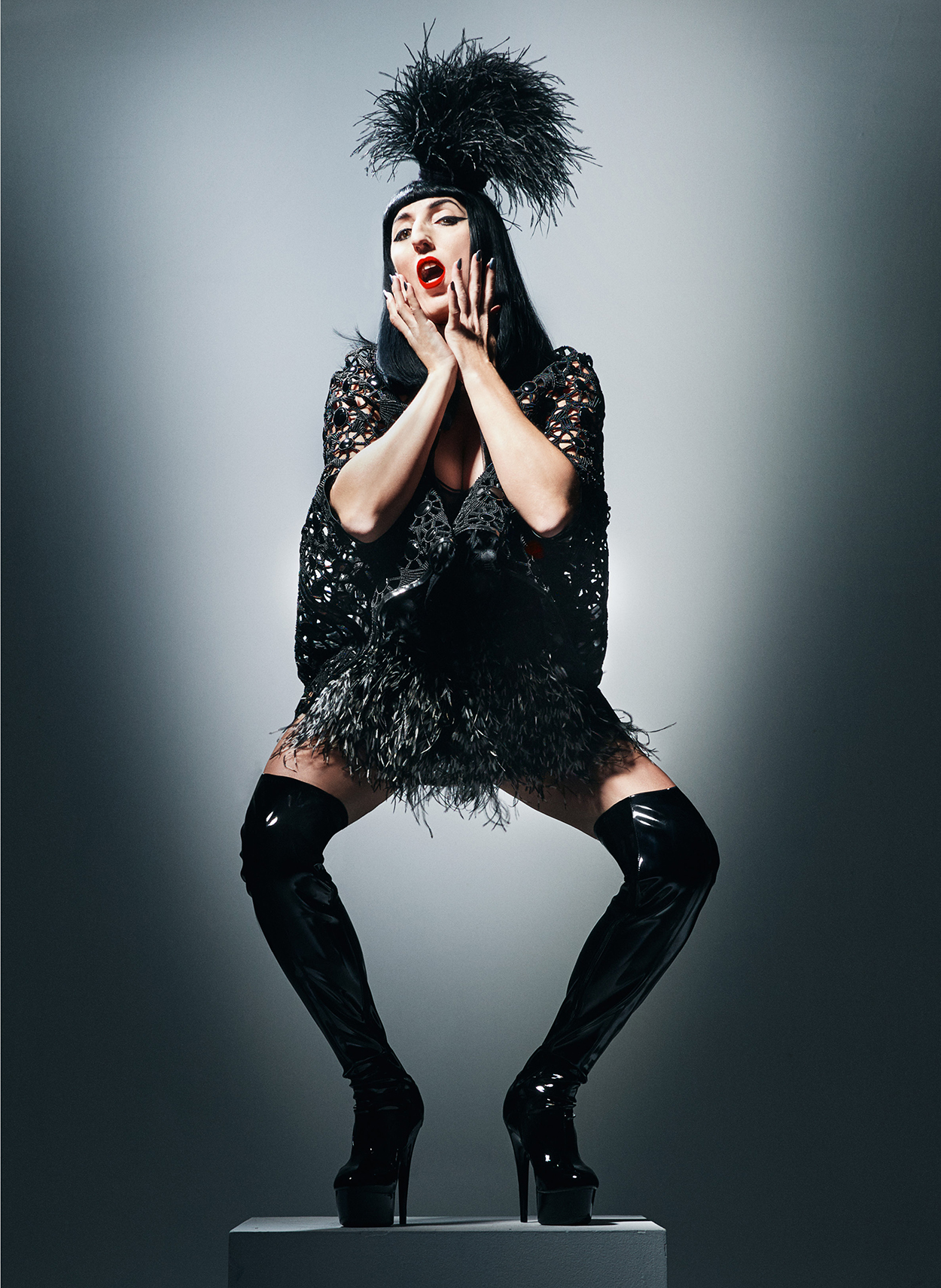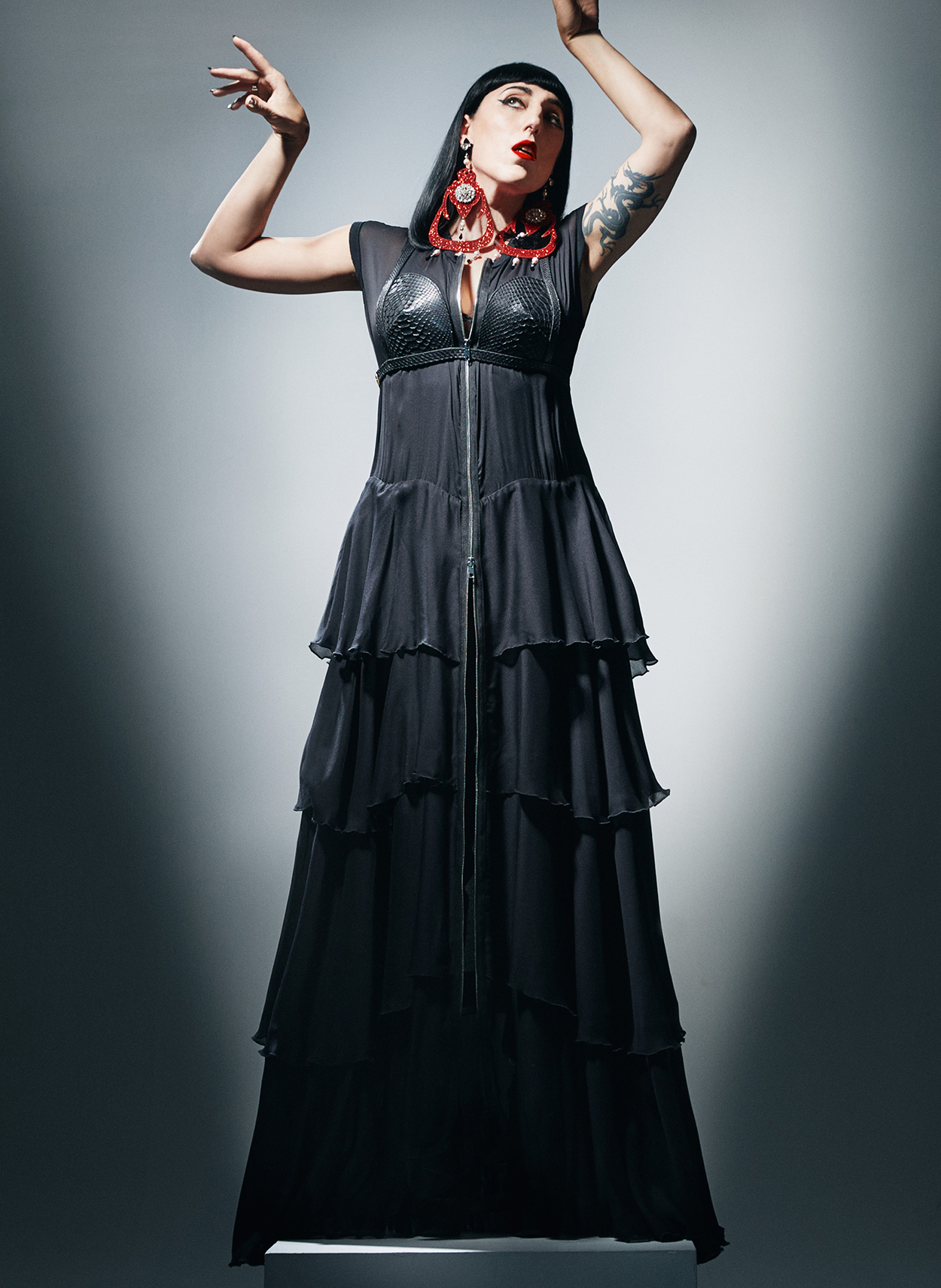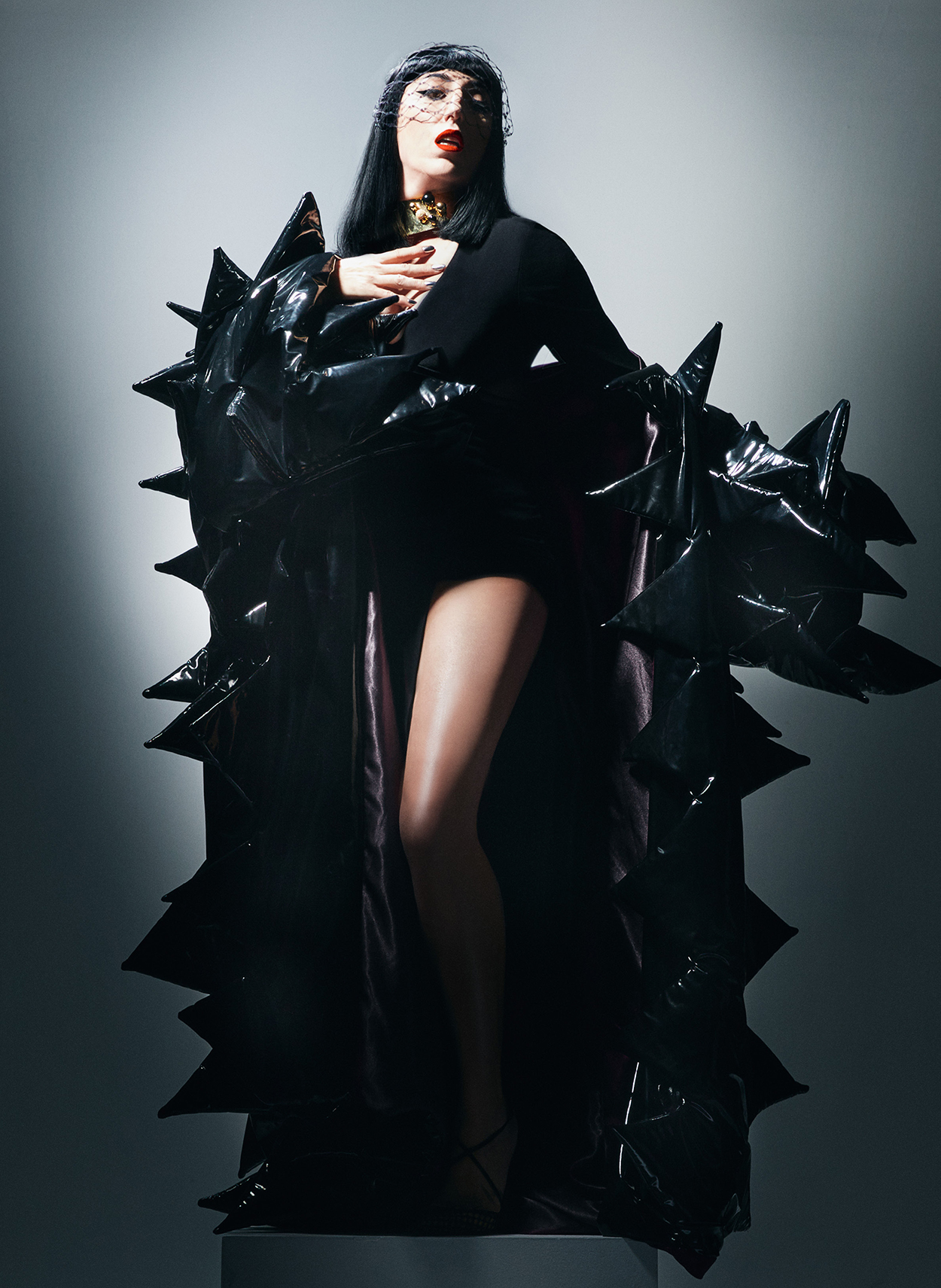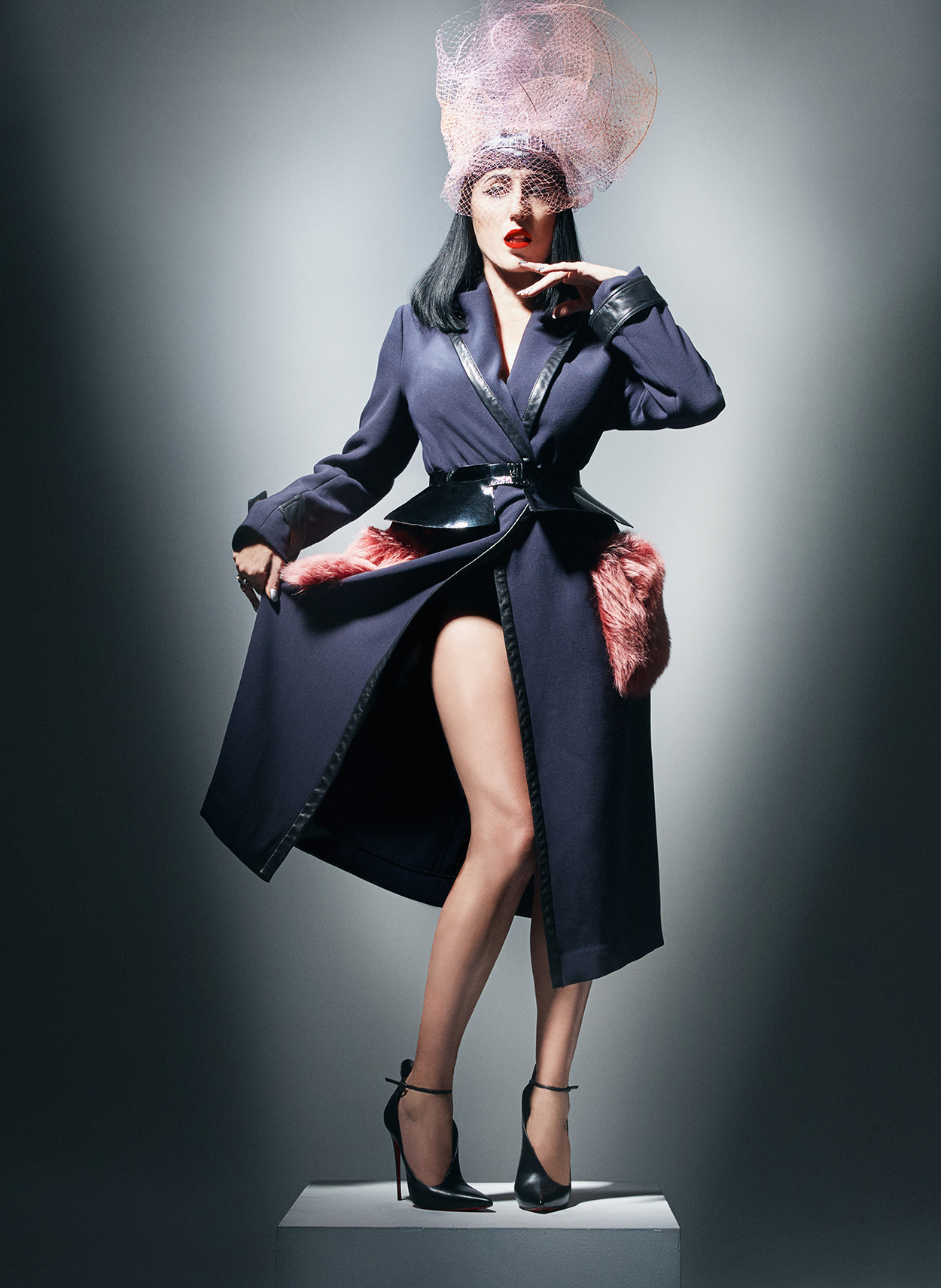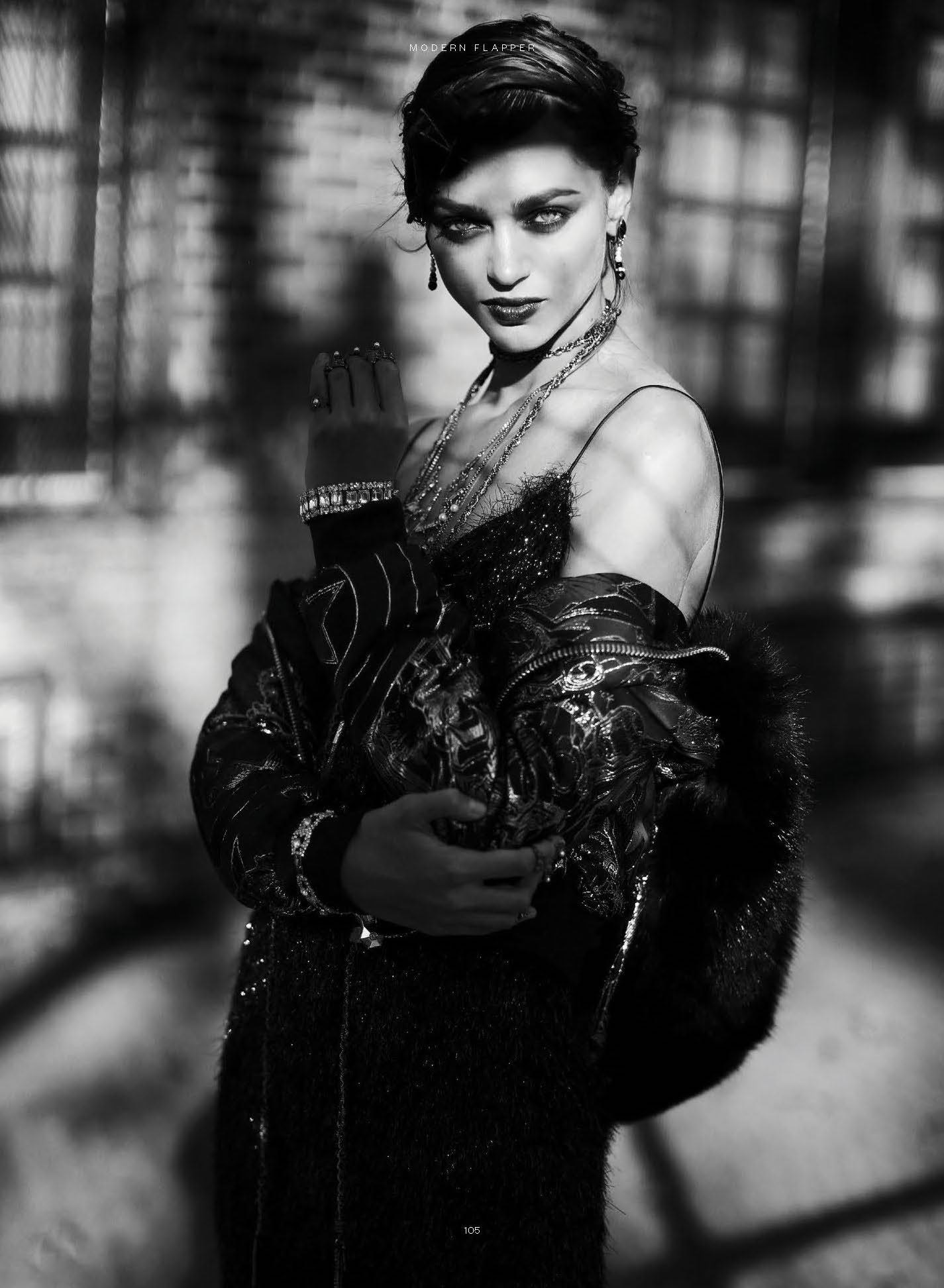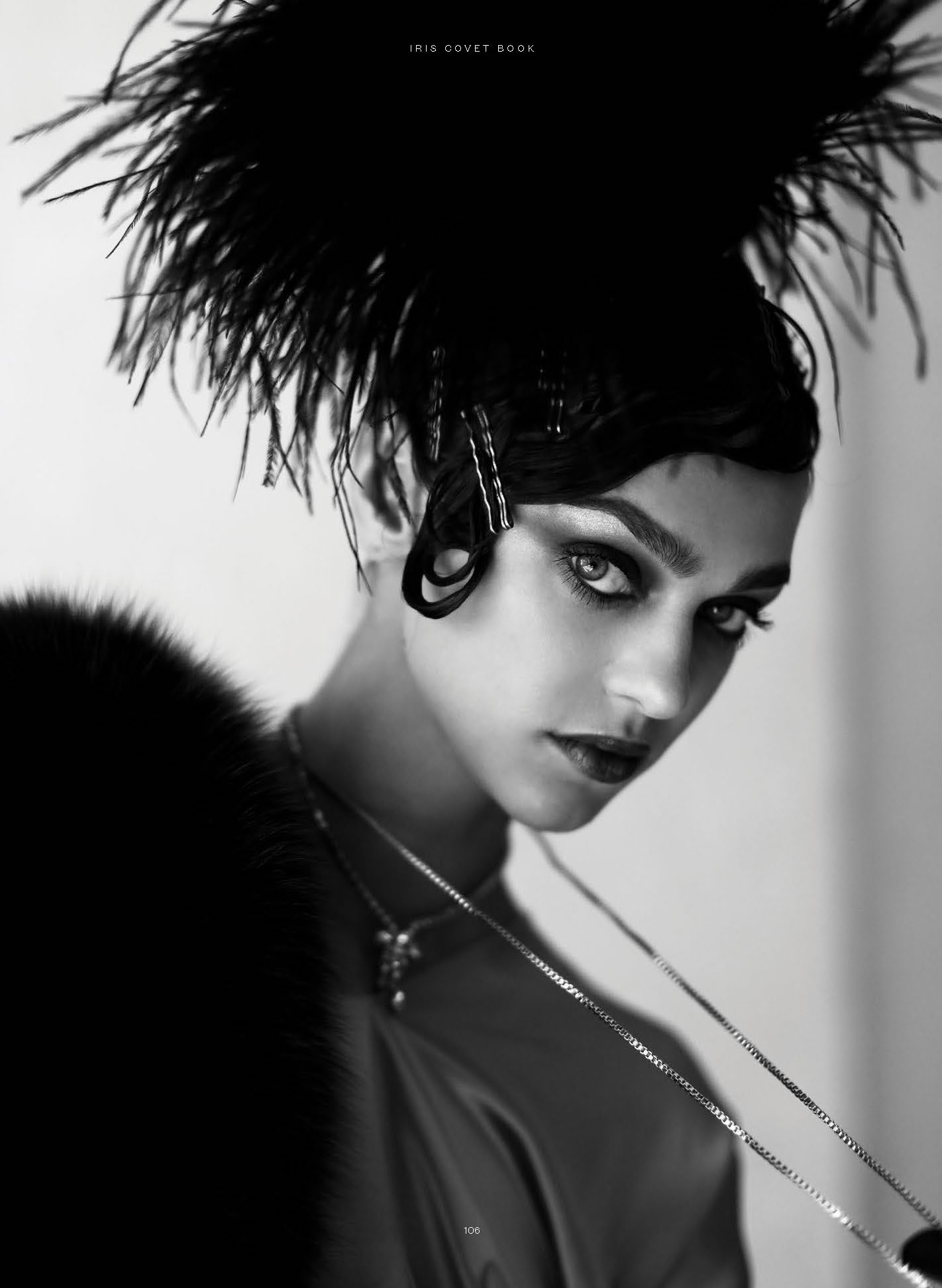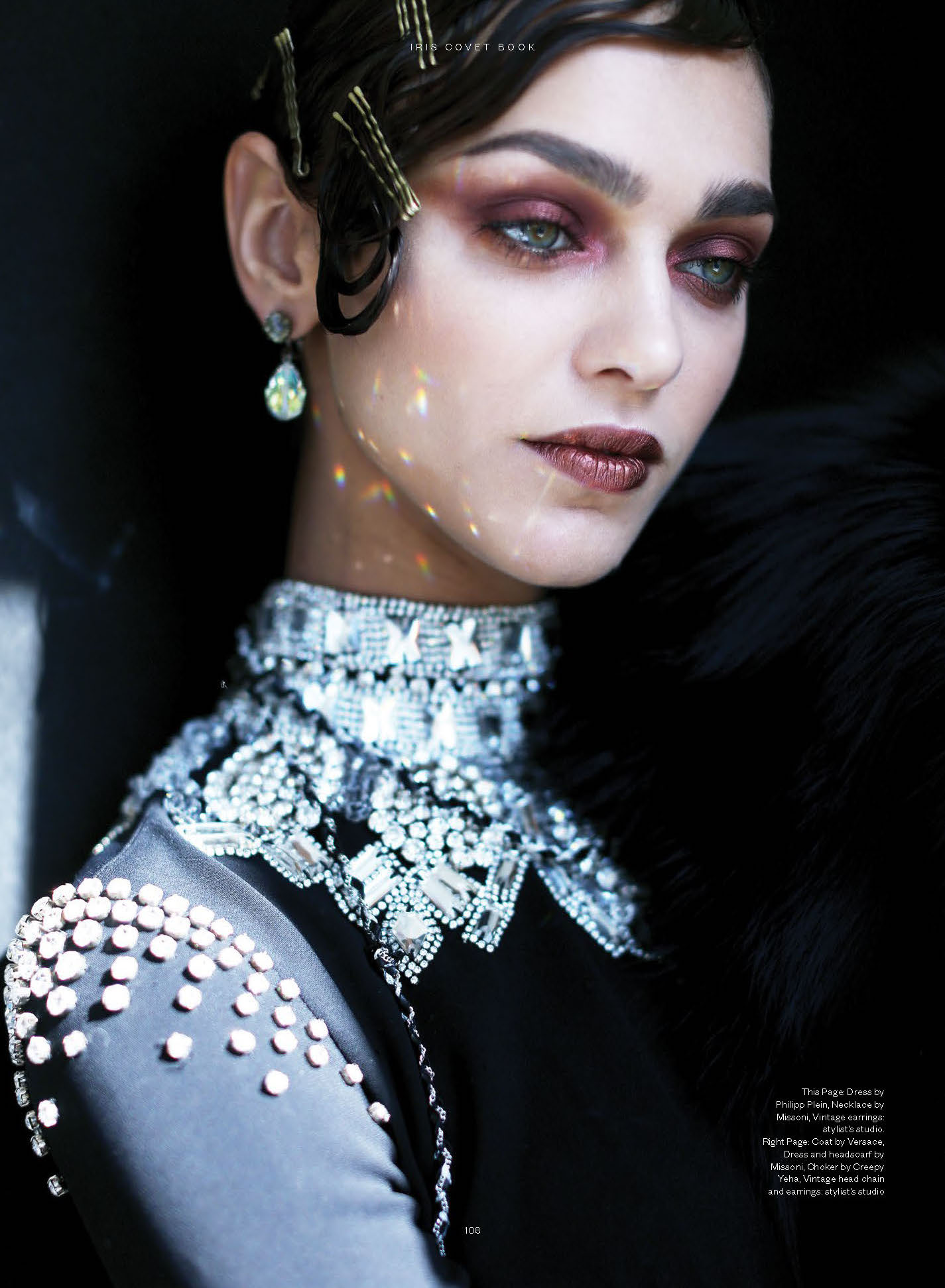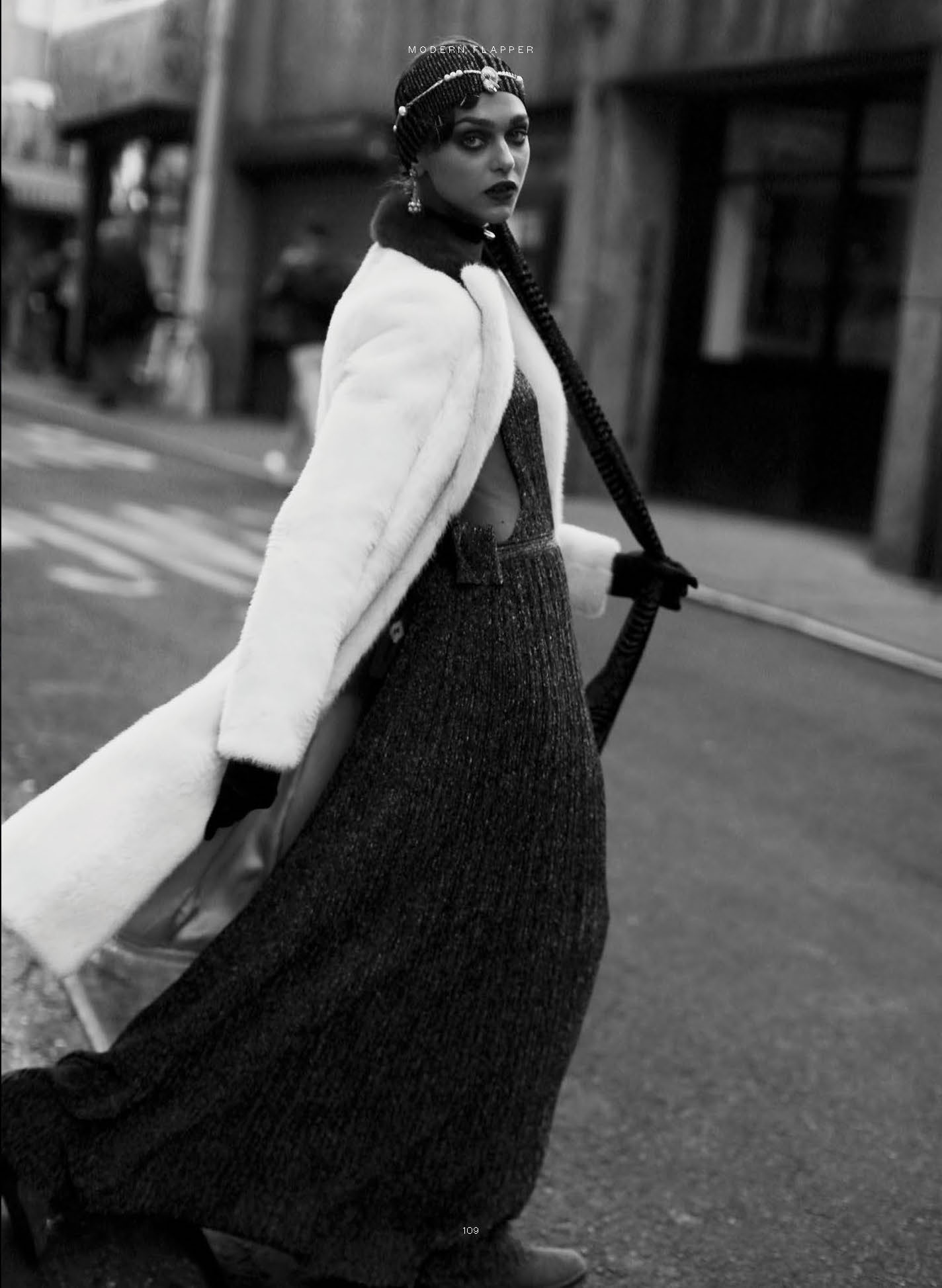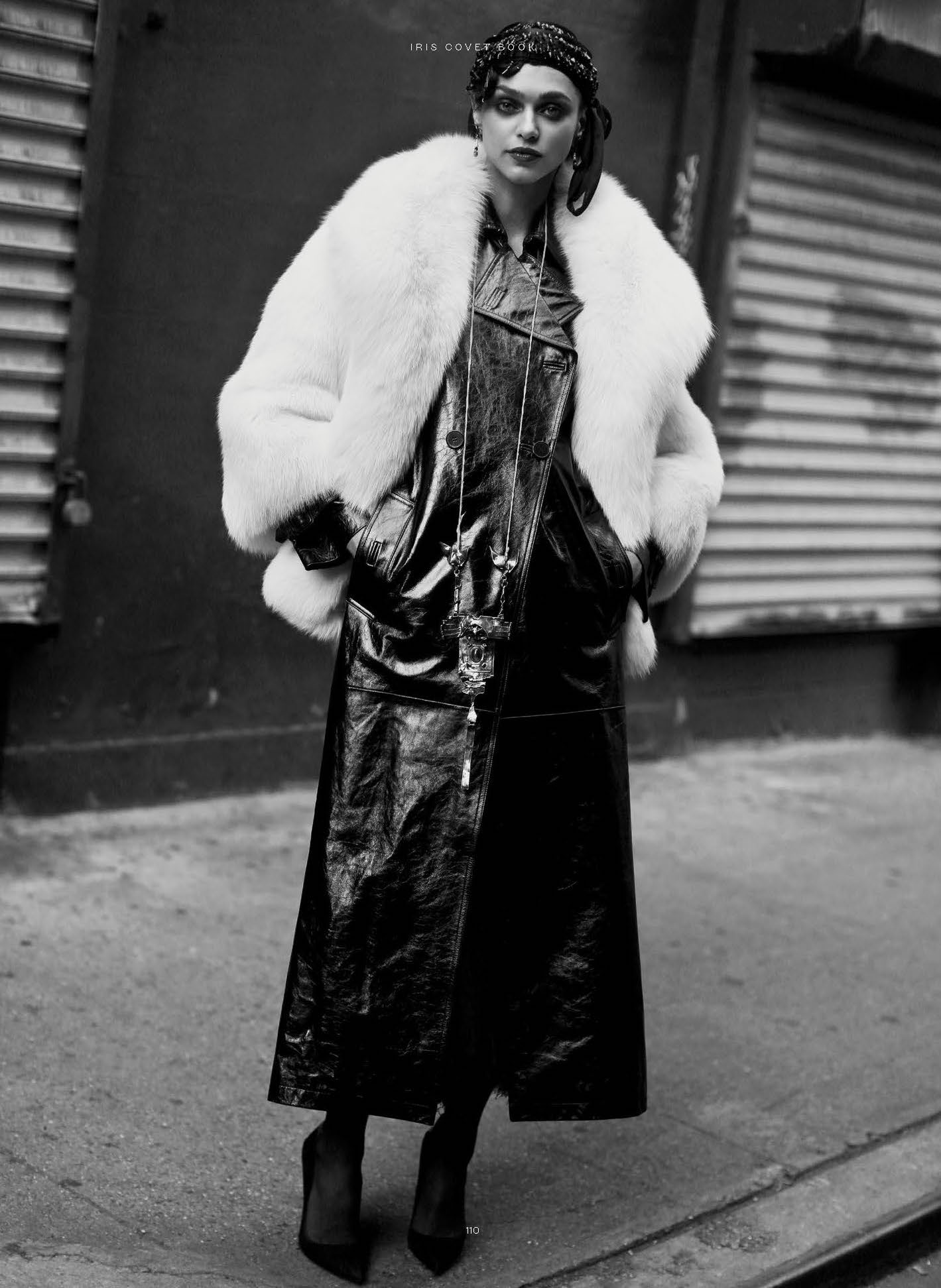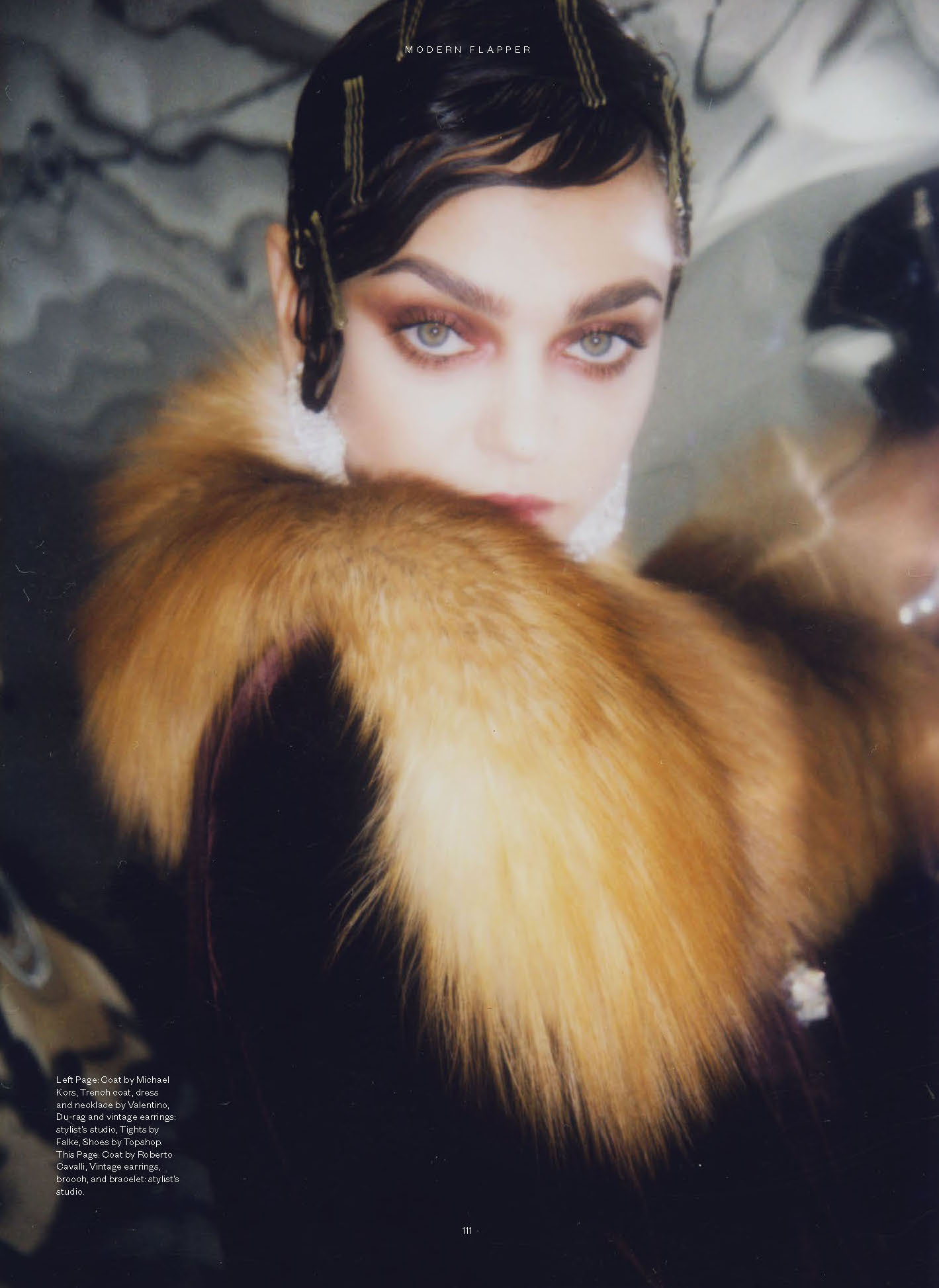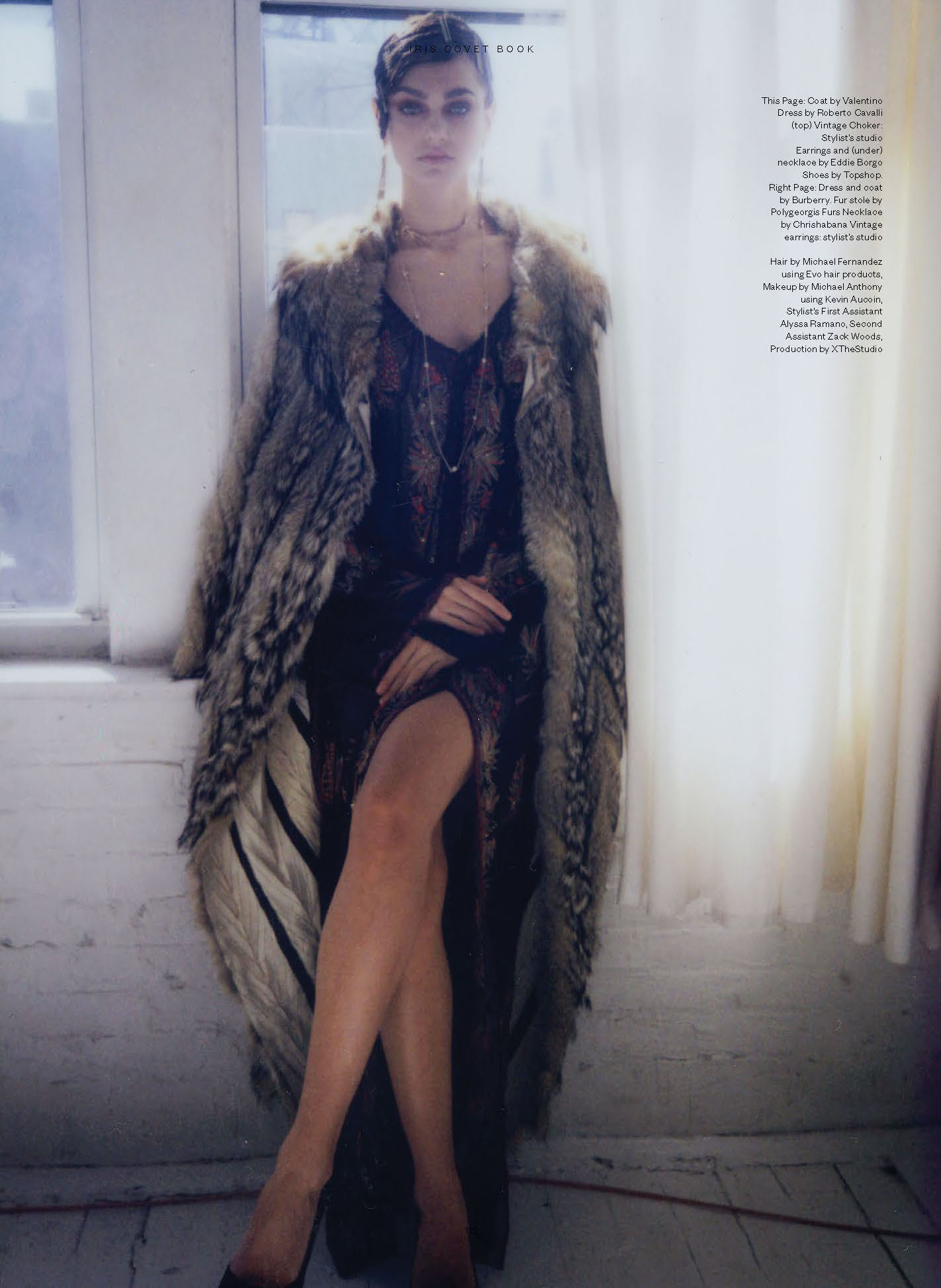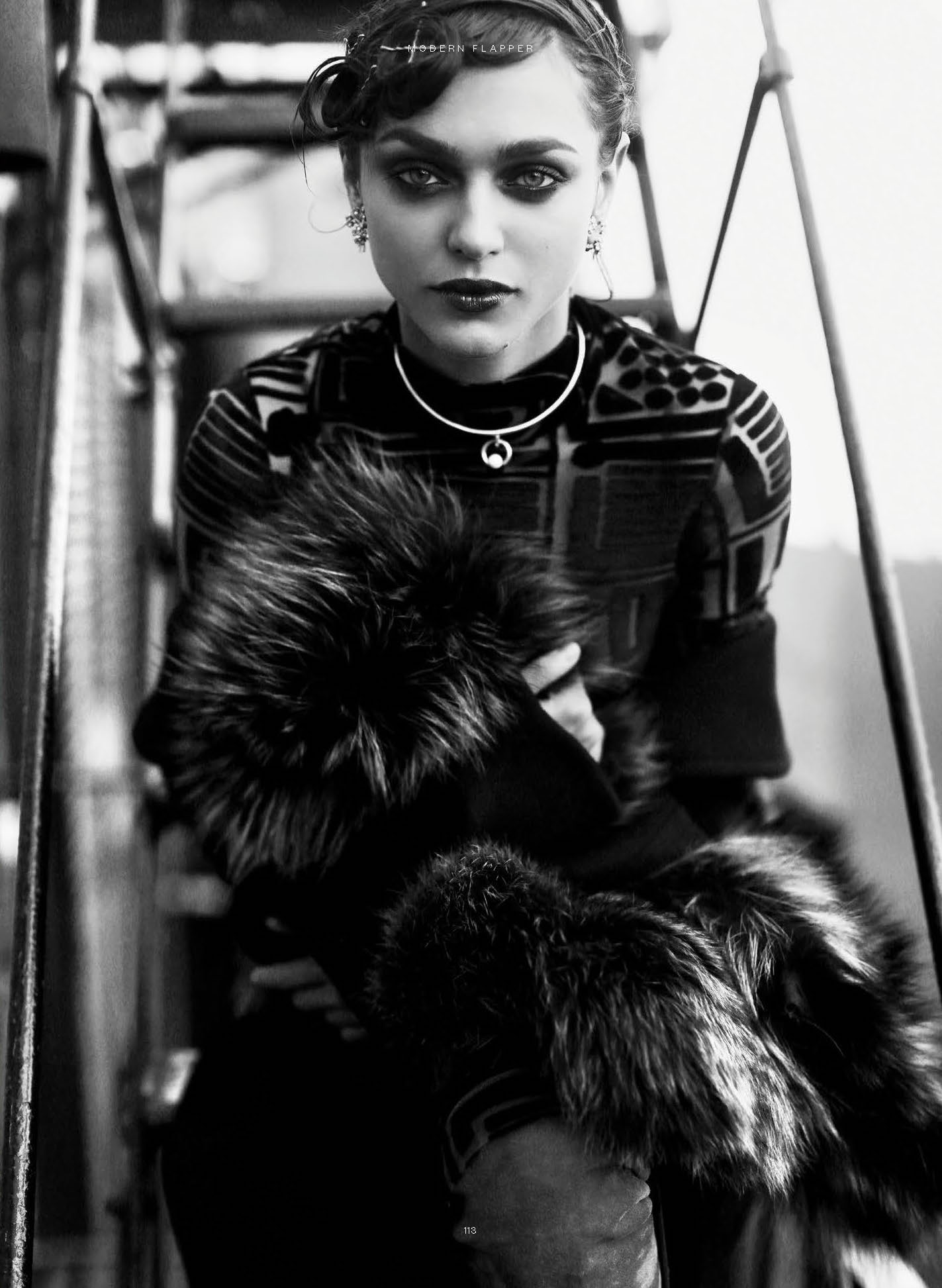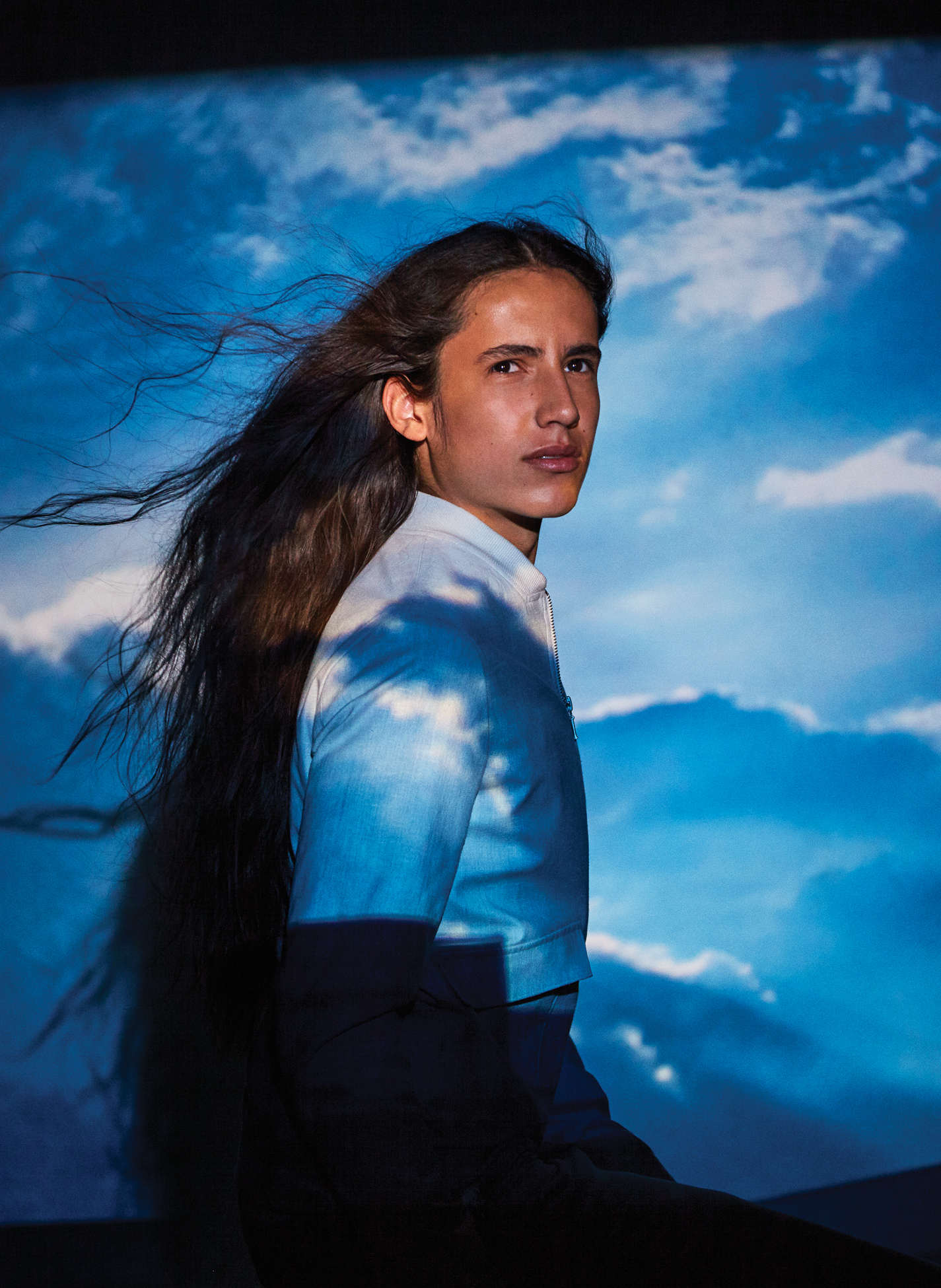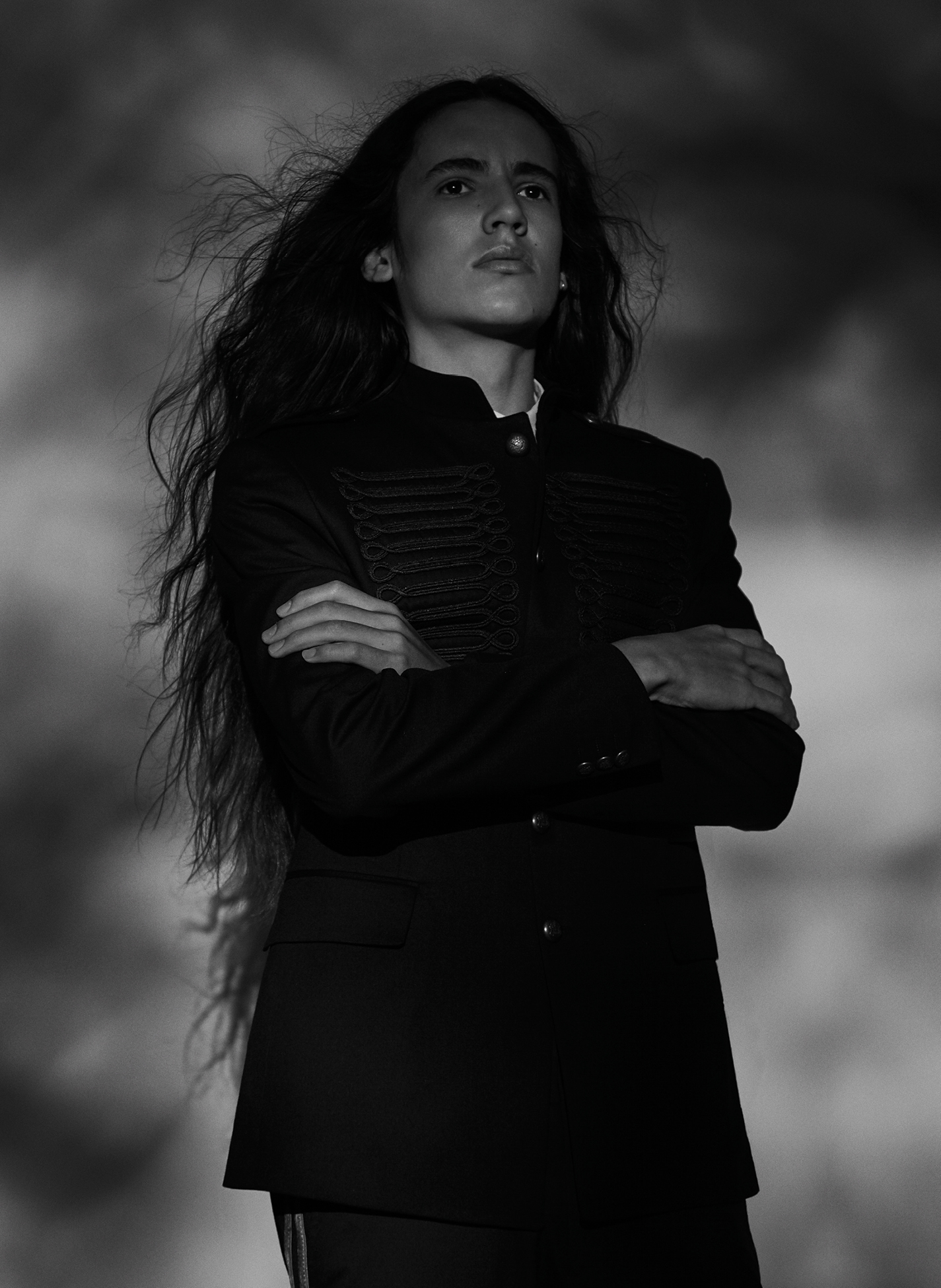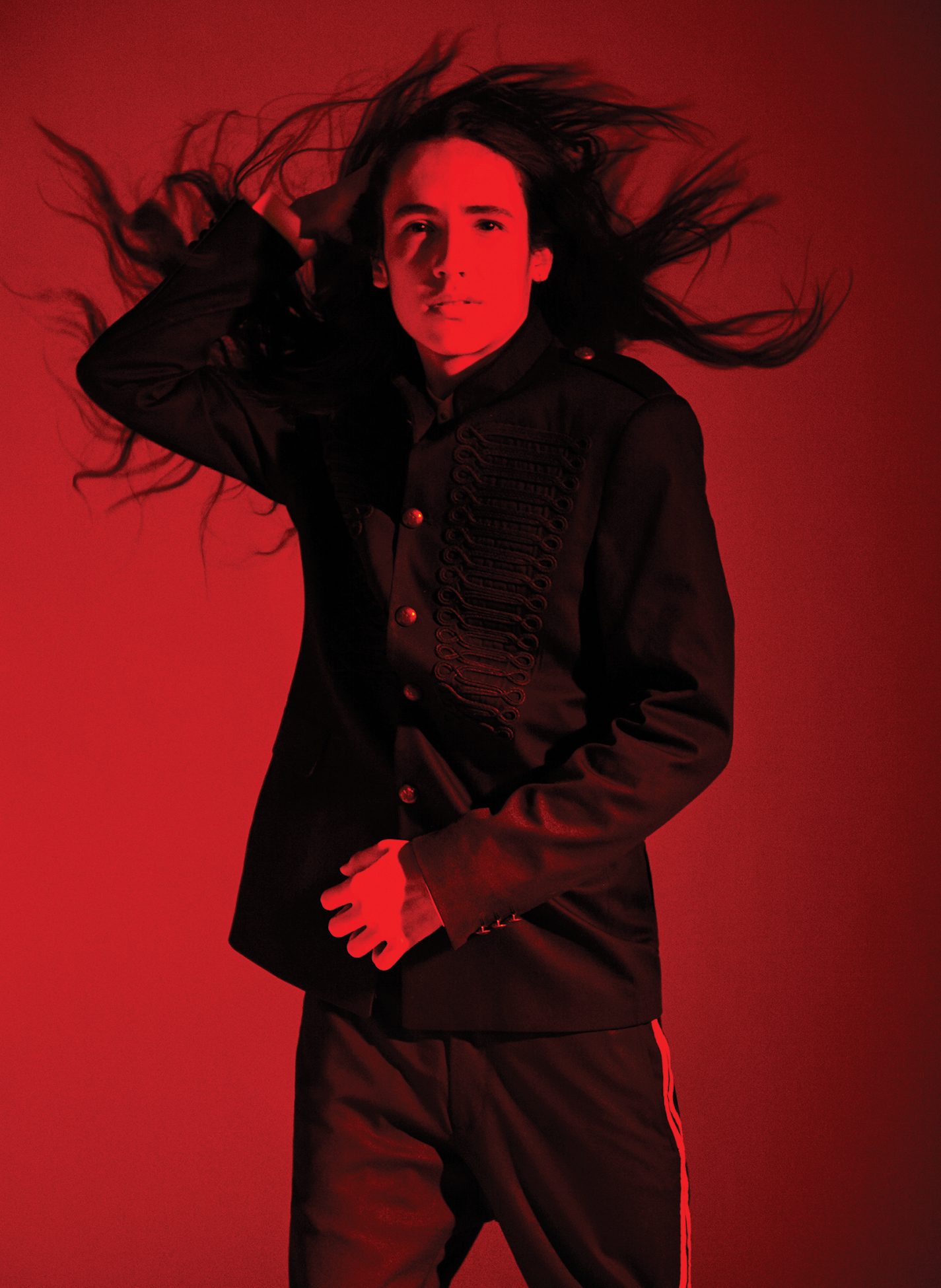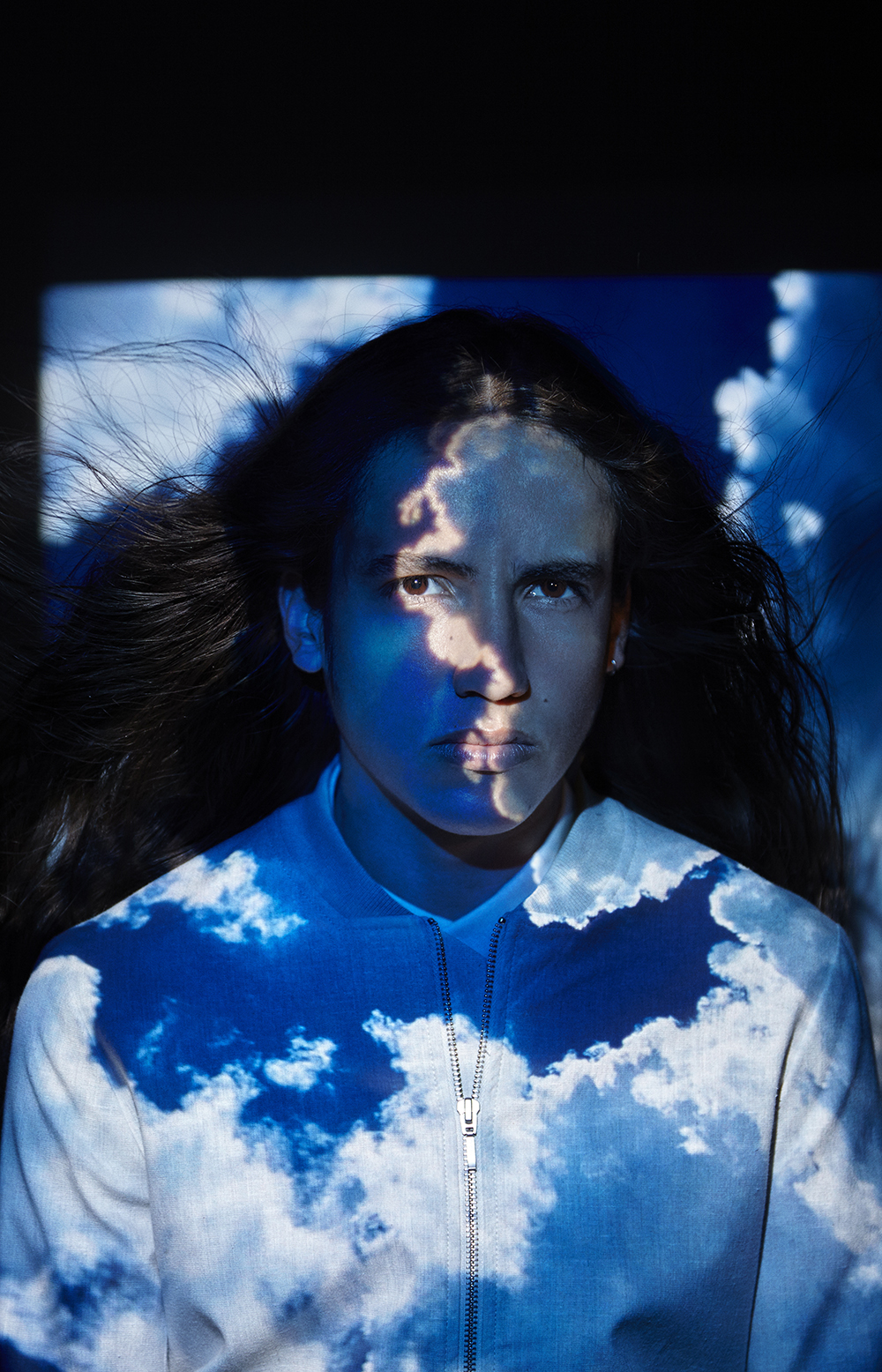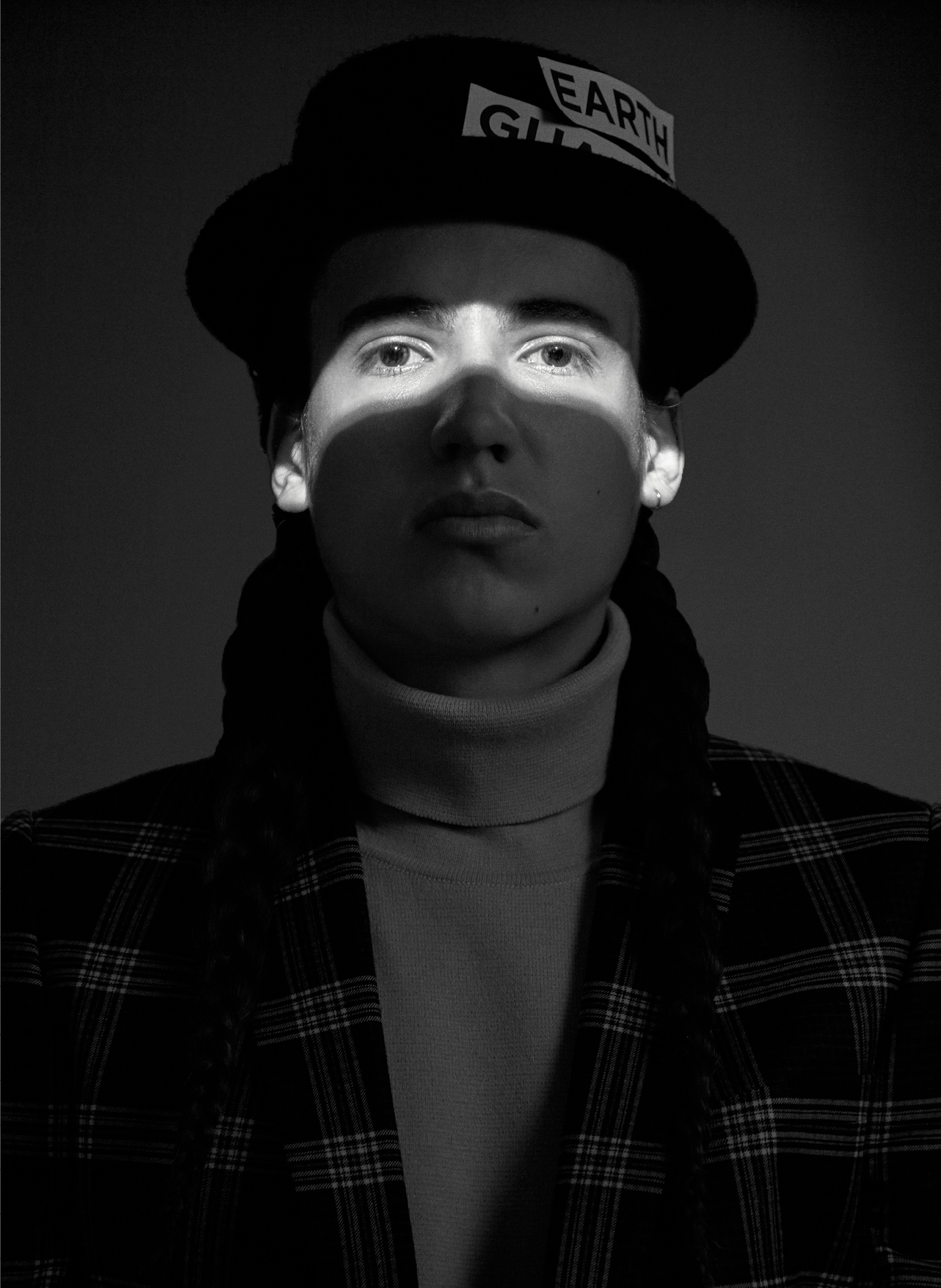JAMES GOLDSTEIN
 Custom Made Jacket by Balmain, Custom Made Hat is Mr. Goldstein’s own design, Scarf by Ashley Ashof, T-Shirt by Saint Laurent, Belt by Roberto Cavalli and Pants by Balmain.
Custom Made Jacket by Balmain, Custom Made Hat is Mr. Goldstein’s own design, Scarf by Ashley Ashof, T-Shirt by Saint Laurent, Belt by Roberto Cavalli and Pants by Balmain.
James Goldstein is an enigma. An American billionaire living in Los Angeles, Goldstein spends his days traveling, socializing with the rich and famous, and living in a work of art in the sky. Though the exact source of his billions remains vague, we do know Goldstein has created quite an empire for himself in property and real estate investments. As a self-proclaimed NBA “super-fan”, Goldstein sits courtside at every LA home game and travels for seven weeks every year during the playoff season, following the teams’ game schedule as they tour from city to city. Mr. Goldstein has been working on his iconic modernist estate – a fantastically detailed vision of poured cement and glass that includes: a tennis court, entertainment theater, private night club, sprawling landscaping, and a commissioned installation room by renowned artist James Turrell.
When he is not traveling with his favorite NBA players, James spends his time jet-setting to St. Tropez and Ibiza, sitting front row during fashion week as a personal guest of the designers for Balmain, Saint Laurent, and Versace, or hosting celebrity packed parties at his home. Goldstein is instantly recognizable with his reptilian cowboy hats, tight leather jeans, and custom-made blazers. Aesthetic and attention to detail are important to Goldstein, and nothing proves that point more than his home which has has been honed and customized perfectly to his individual taste. IRIS Covet Book invites you to enter the beautifully designed life of James Goldstein.
 Jacket by Saint Laurent, Custom Made Hat is Mr. Goldstein’s own design, Scarf by Ashley Ashof, Pants by Balmain, and Boots by Dior Homme.
Jacket by Saint Laurent, Custom Made Hat is Mr. Goldstein’s own design, Scarf by Ashley Ashof, Pants by Balmain, and Boots by Dior Homme.
Coming from Milwaukee, Wisconsin where you were born what brought you to live in Los Angeles?
I went to college at Stanford and moved sight-unseen, and while I was there I had a roommate who was from Los Angeles who invited me to visit him during a break from school. My impression of Los Angeles was very favorable and I decided to give it a try by going to UCLA for graduate school. I’ve lived here ever since.
How did your career unfold after school?
Well, I am not sure if I had any clear aspirations at that time, but I began in property investments and headed off in that direction feeling that it would be lucrative and hopefully allow me to not spend my life working all the time. Eventually, I felt that it offered me an opportunity to have a lifestyle where I could enjoy many other things besides working 9-5. Basketball was certainly important to me at that time as well.
Did you ever want to be a professional basketball player?
I certainly wanted to be when I was younger, and I played on my high school basketball team, but I was realistic enough to know that the chances of that were very slim. So, instead of hoping to be a professional basketball player, I hoped to someday own, or be a partial owner, of a basketball team.
You have your new clothing line “James Goldstein Couture”, what was the inspiration, or the thought process, behind starting that collection?
I was approached by two of my closest friends from Milan who called me one day and said they wanted to start a clothing line. They wanted me to be the name of the line and the inspiration behind the designs. I had never seriously considered starting a clothing line because I do not have formal education in fashion design, but I have had a number of people come to me throughout the years and urge me to start a clothing line because they liked my style. I couldn’t say no because they are such good friends, and I thought maybe I could have some fun as well.
Your style is so signature and unique. How did that come to be? Did you always have a way with how you dress or did it evolve over time?
At an early age, I started following the top designers in Paris and Milan, and even in high school I always wanted to be one step ahead of everyone else when it came to fashion. I started traveling to Europe when I was young and I payed very close attention to the new clothes each season, and I tried to acquire special pieces every time I would go. I was really getting inspired by what these designers were coming up with and that became the governing determinant of what I was wearing each season. My style really evolved out of following these designers, which I continue to do.
Who are your favorite designers at the moment?
Well, Olivier (Rousteing) from Balmain is number one for me right now.
Why is that? What is it about his designs that speak to you?
He comes up with some very unique designs that are quite glamorous, amazing in their styling, and quite often made out of python which is one of my favorite materials to wear. They are all unique too. No one else will be wearing them. I know when I put one of those pieces on that people who see me won’t see that look on anyone else. Olivier is a friend of mine. He and I meet whenever I go to Paris and discuss the upcoming season. We are definitely on the same wavelength.
In recent years, I have also been buying a considerable number of clothes from Saint Laurent. I’ve bought a couple of pieces that I wear quite frequently. I’ve always liked what Vaccarello has designed for women, so I am waiting to see what he comes up with for men. So far there isn’t the same depth to the collection that there was under Hedi (Slimane), but I have bought two jackets recently from YSL that are just outstanding.

 Jacket by Saint Laurent, Custom Made Hat is Mr. Goldstein’s own design, Scarf by Ashley Ashof, and Pants by Balmain.
Jacket by Saint Laurent, Custom Made Hat is Mr. Goldstein’s own design, Scarf by Ashley Ashof, and Pants by Balmain.
What are some of your favorite destinations to travel in the world? I imagine that you do quite a bit of traveling because of the NBA games and other social events.
I travel almost seven months out of the year. There are different categories of travel that I indulge in. There are the NBA games during the playoff season which lasts for seven weeks and require travel almost on a daily basis to various US cities. Then there is the fashion travel which takes me to Milan, Paris, Moscow, Berlin, Copenhagen, etc. once or twice every year. I have my regular summer vacation spots which include St. Tropez and Mykonos, Ibiza, and so forth. Probably the most exciting traveling that I do every year is when I visit a place that I have never been to before. I try to do that at least once a year. This past winter I went to Sri Lanka and Southern India for the first time.
You’ve been referred to as a “super fan” of the NBA. How did your love of basketball first begin?
It began at the age of five or six when my parents put a basketball hoop up in our driveway and I started playing. I really took to the sport, and at the age of ten my father took me to my first professional basketball game and I fell in love with the NBA, even though at that time it was not very popular. At the age of fifteen I was offered a non-paying job as the statistician for the Milwaukee Hawks, so I was attending every home game and sitting courtside. That experience really propelled me into making basketball a huge part of my life and has never stopped.
When you’re not attending NBA games, how do you spend your free time? What are your favorite activities in Los Angeles?
I enjoy playing tennis, and having my own tennis court. I not only attend basketball games with two teams in Los Angeles, but I also follow the games on television religiously. I read the Los Angeles Times and New York Times every day cover to cover, and I enjoy going out to various restaurants, parties, and so forth. I still have a very active social life and like to hang out with people much younger than me.
There is also, of course, Club James Goldstein, which is a really impressive structure inside of your home where you host large parties and gatherings. What have been some of the most memorable events you’ve had in the club?
Well, the club was not even finished yet when Rihanna had her birthday party there, and that was a very memorable event. One of the best parties I have ever been to, even though it was in my home. (laughs) Fairly recently, on the night of the Academy Awards, there was an after party here that did not start until about midnight and lasted until 5:30 in the morning. The crowd was great, everyone was well dressed, and it was a great party.
 Nestled into the side of a canyon, Goldstein’s house look out over downtown Los Angeles and beyond.
Nestled into the side of a canyon, Goldstein’s house look out over downtown Los Angeles and beyond.
I can imagine! Those sound like two unforgettable parties. Do your neighbors hate you for all of the party noise? (laughs)
Well, there isn’t that much noise because the house is pretty well contained and situated down the hill, down a long driveway. There are a couple of neighbors who do call the cops though. (laughs)
Your home is such a phenomenal piece of architecture and I want to know how that came to be. How have you been developing it over the years, and what the are the inspiration behind these developments?
When I acquired the house, the minute I walked in…there wasn’t a doubt in my mind that it was the perfect house for me. But it was not perfect in terms of its execution and subsequent remodeling by the second and third owner of the home. Initially the house was built with a very tight budget, so very inexpensive materials were used throughout. The next owners painted what concrete there was, put in wall-to-wall green shag carpets, and did a lot of very bad things to the house.
Even though the house overwhelmed me when I saw it for the first time due to its fantastic architectural design, the house really had a long way to go to reach perfection. It took me a few years before I brought John Lautner, the architect of the home, back to work on it. We started out with one very straight forward project of replacing the glass windows in the living room. That was really my first experience with remodeling, and once I started that I never stopped.
I am a perfectionist and I wanted every detail of the house to be perfect without regard to cost. After a number of years of working with Lautner, I proceeded to other projects such as the landscaping where I took the same approach. After John Lautner passed away, I started new projects throughout the property, such as the James Turrell Skyspace, the tennis court, offices, nightclub, and the extensive terrace that I am still working on.
 The furniture is custom-designed to fit the angles and design of the home. “Every detail has been worked on,” Goldstein says, “including where the stitching of the leather is.”|All interior photos by THE VHF – www.thevhf.com
The furniture is custom-designed to fit the angles and design of the home. “Every detail has been worked on,” Goldstein says, “including where the stitching of the leather is.”|All interior photos by THE VHF – www.thevhf.com
What encouraged you to commission James Turrell to create that beautiful space?
I have always enjoyed contemporary art and like to attend museums and galleries on a regular basis. The first time I saw a work by James Turrell was at the Ace Gallery in Venice, and I was very excited by it. I continued to follow his work which I would see everywhere in France, Italy, and someone’s personal collection here in Los Angeles. I knew that I had to have one for myself.
Do you think that your home is close to perfection now?
Yes, I do. But, there is always going to be some fine tuning that is going on.
 Integrating indoor and outdoor space was one of John Lautner’s signature architectural elements including the dramatic cliff-side location and large expanses of glass.
Integrating indoor and outdoor space was one of John Lautner’s signature architectural elements including the dramatic cliff-side location and large expanses of glass.
At IRIS we like to highlight the charitable work of the people we feature. Can you share with us any charities or humanitarian issues that are important to you which you support?
I have donated my house, property, clothing, pretty much everything that is in the house to LACMA, the Los Angeles County Museum of Art. They intend to keep the house how it is; preserving it and opening it to the public. I have become quite involved with LACMA, and it would have to be my number one charity at the moment.
 Jacket and Pants by Balmain, Custom Made Hat is Mr. Goldstein’s own design, Scarf by Ashley Ashoff
Jacket and Pants by Balmain, Custom Made Hat is Mr. Goldstein’s own design, Scarf by Ashley Ashoff
Photographer’s assistant Tony Adams|Production by XTheStudio, Special Thanks to Roberta Leighton and Kristin Fliehler|For more information: jamesfgoldstein.com



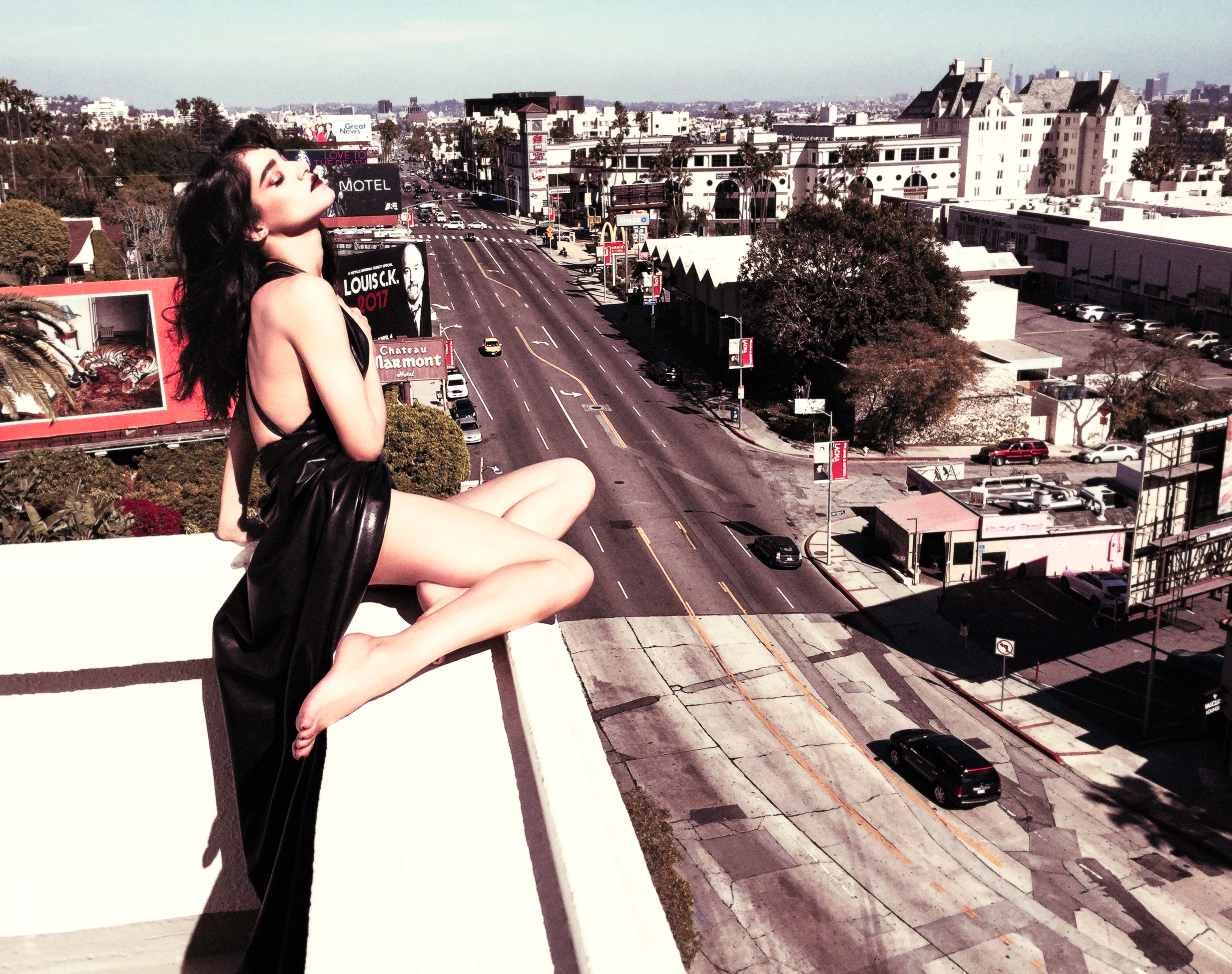
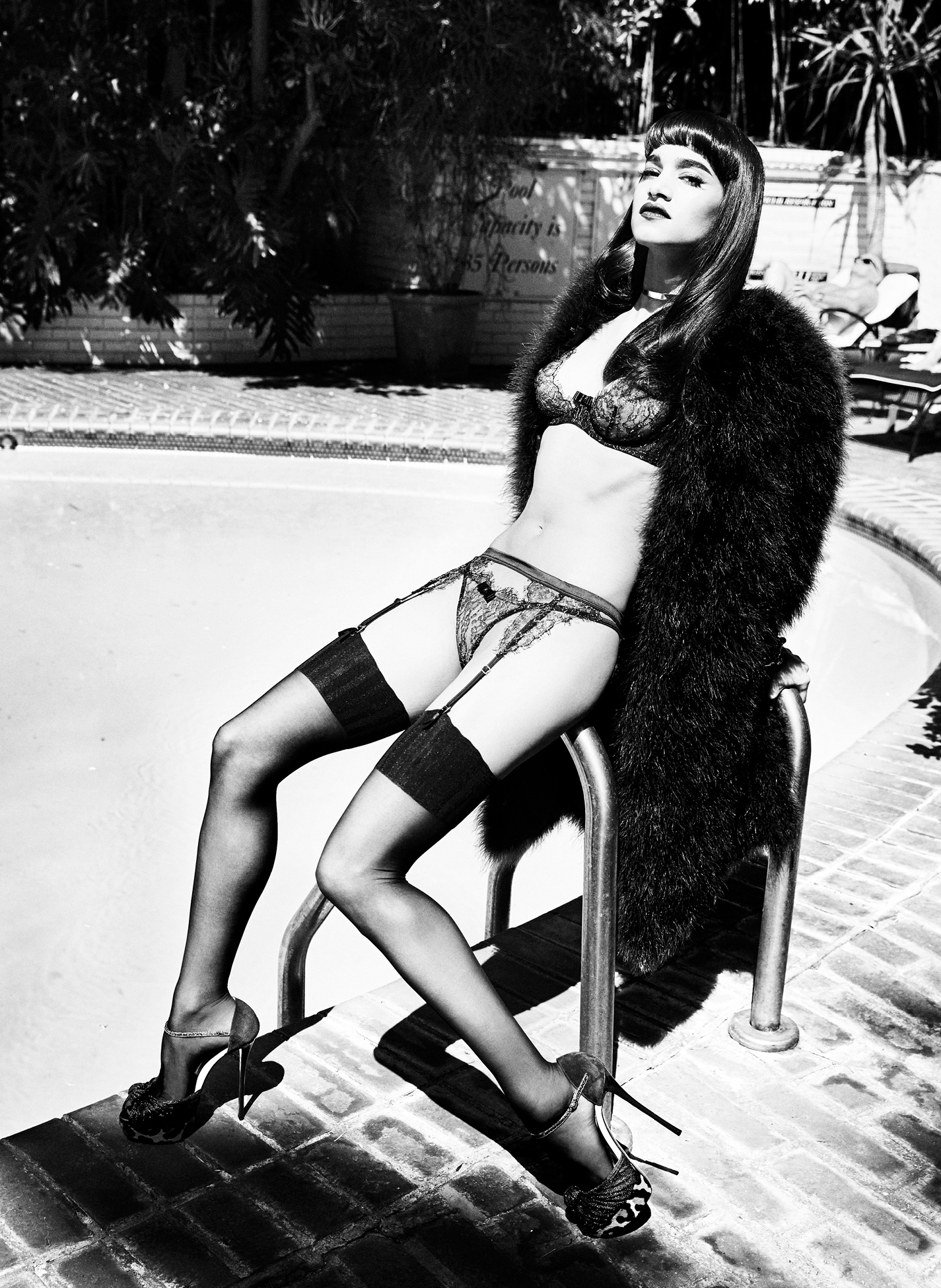 Feather Coat by Vanessa Seward, Bra, Panty and Garter Belt by Maison Close, Black Stockings by FALKE, Shoes by Christian Louboutin, Choker, Earrings and Bracelet by Eddie Borgo
Feather Coat by Vanessa Seward, Bra, Panty and Garter Belt by Maison Close, Black Stockings by FALKE, Shoes by Christian Louboutin, Choker, Earrings and Bracelet by Eddie Borgo Latex Bodysuit by Dead Lotus Couture, Shoes by Marc Jacobs
Latex Bodysuit by Dead Lotus Couture, Shoes by Marc Jacobs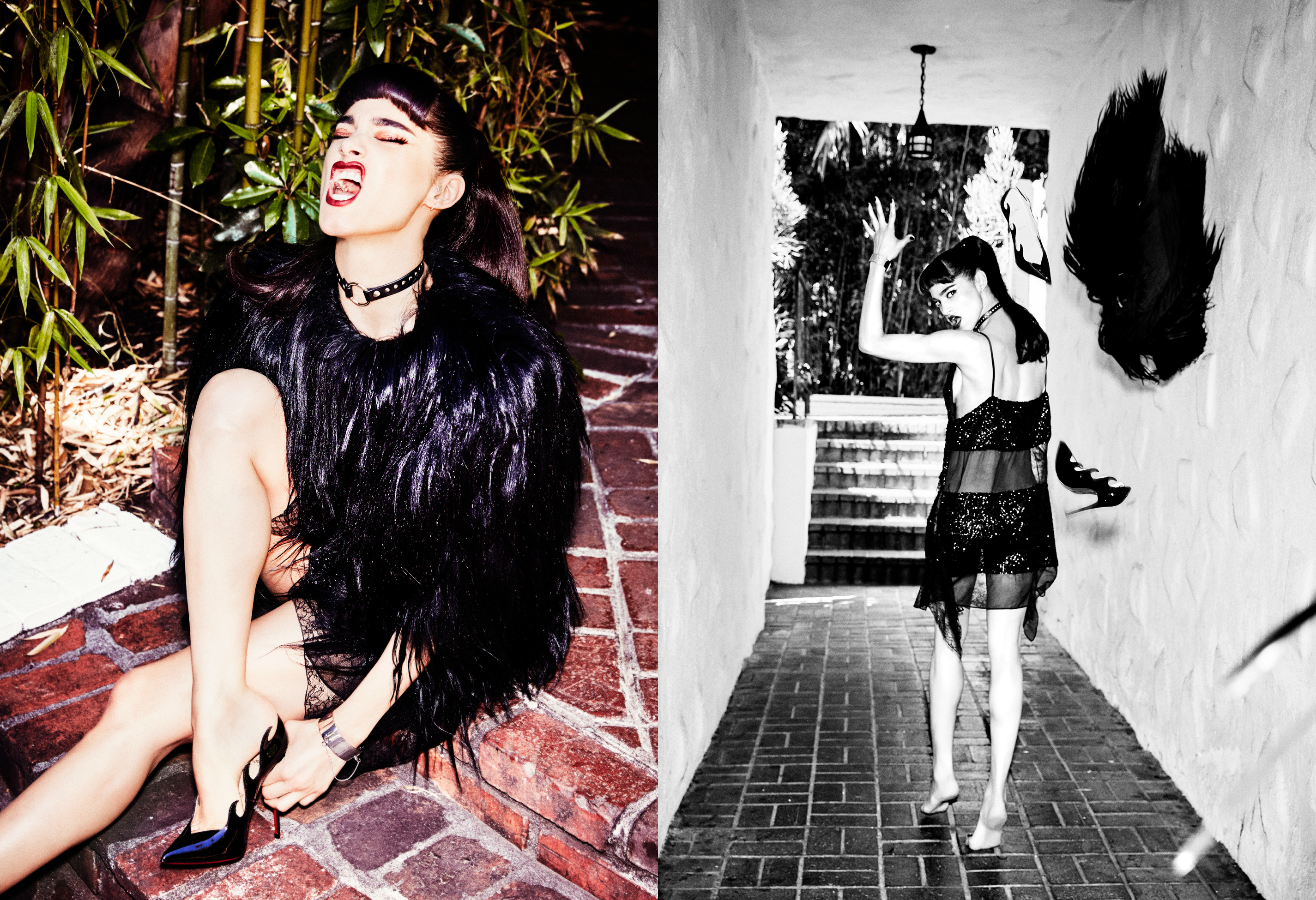 Dress by Lanvin, Black Goat Hair Jacket by Adrienne Landau, Shoes by Christian Louboutin, Bracelet by Eddie Borgo, Choker by YVY, and Sofia’s Own Earrings
Dress by Lanvin, Black Goat Hair Jacket by Adrienne Landau, Shoes by Christian Louboutin, Bracelet by Eddie Borgo, Choker by YVY, and Sofia’s Own Earrings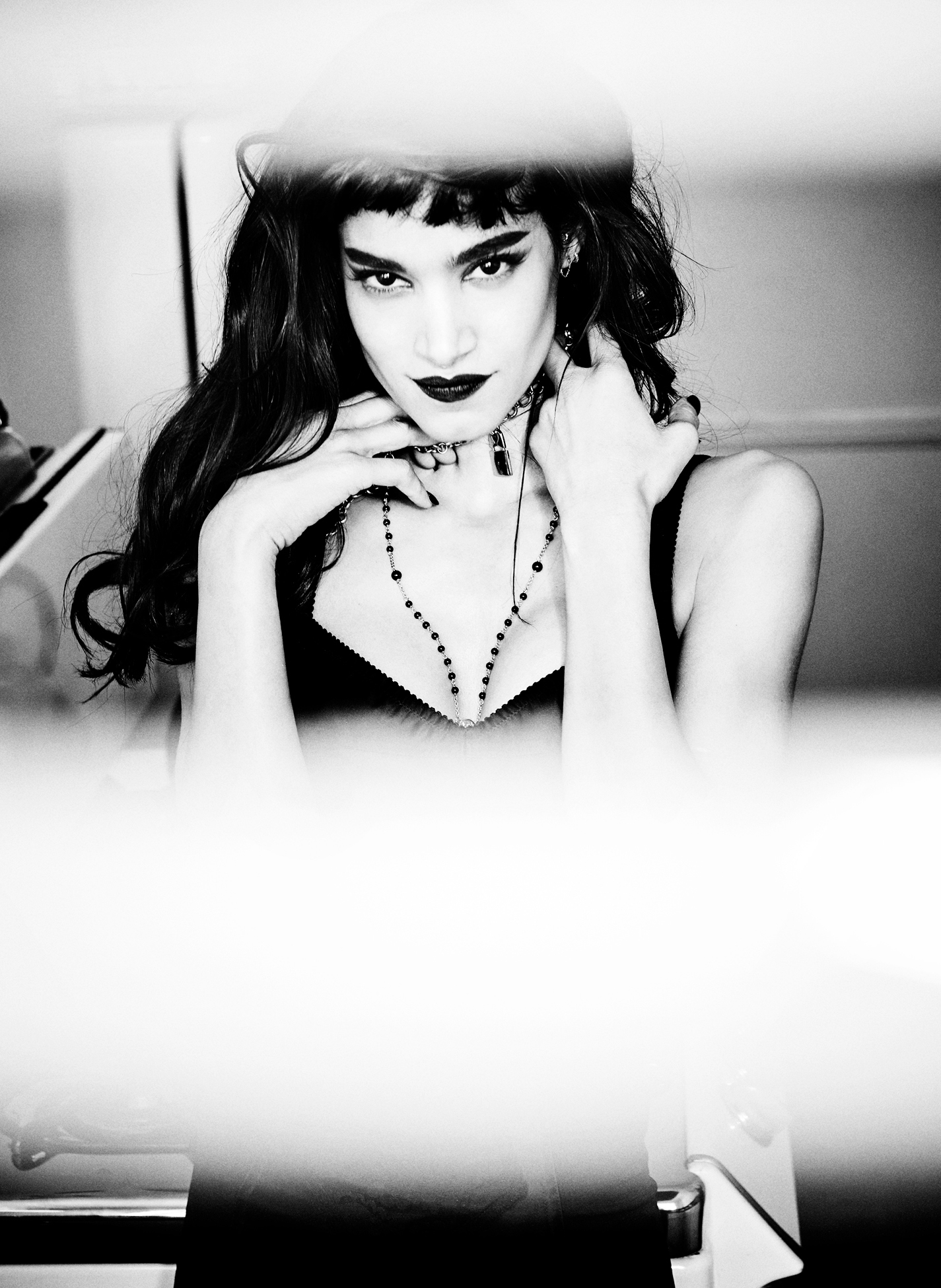
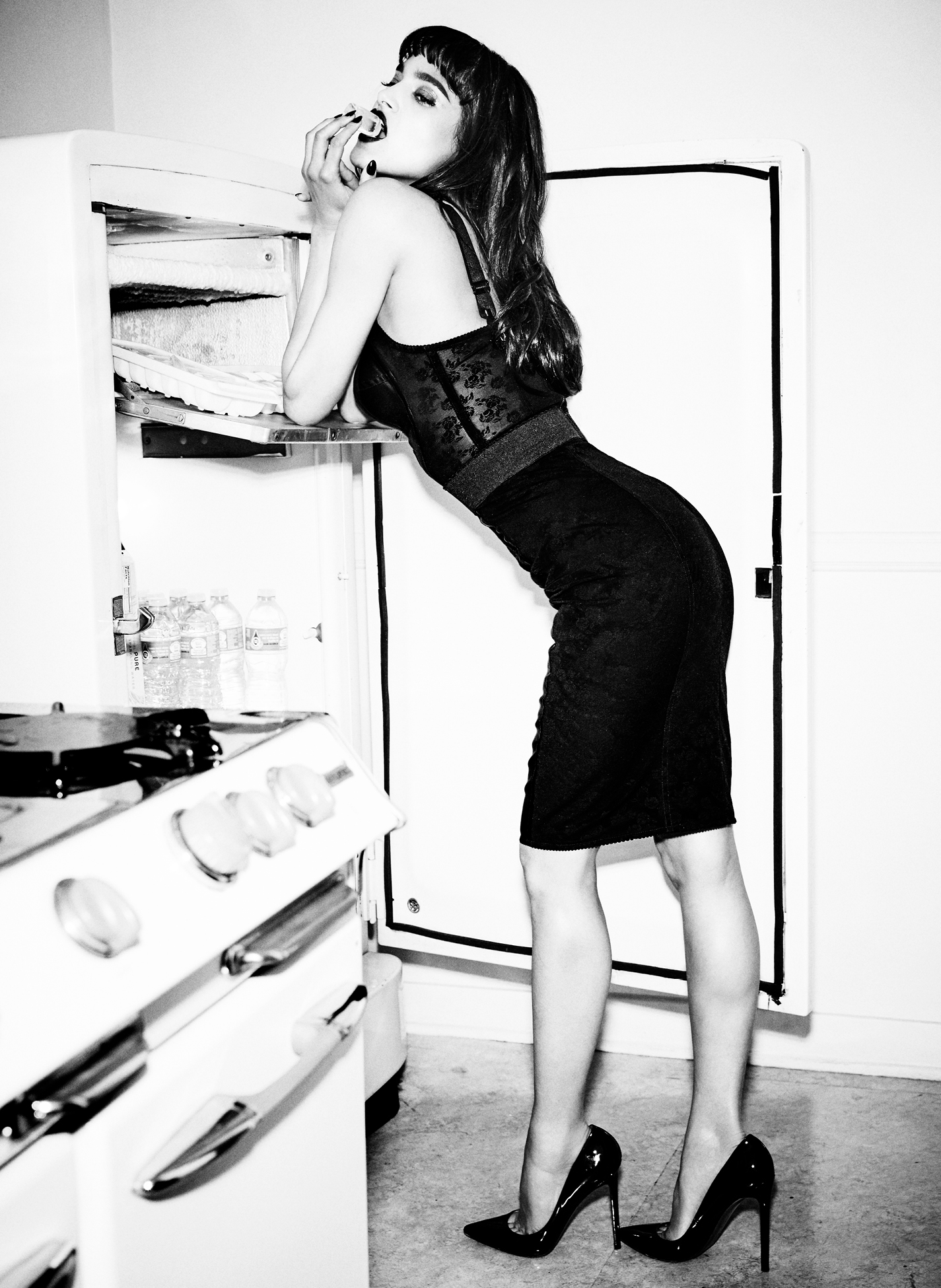 Dress and Rosary Necklace by Dolce & Gabbana, choker necklace by Jillian Dempsey Black Patent Heels by Christian Louboutin, and Sofia’s Own Necklace.
Dress and Rosary Necklace by Dolce & Gabbana, choker necklace by Jillian Dempsey Black Patent Heels by Christian Louboutin, and Sofia’s Own Necklace.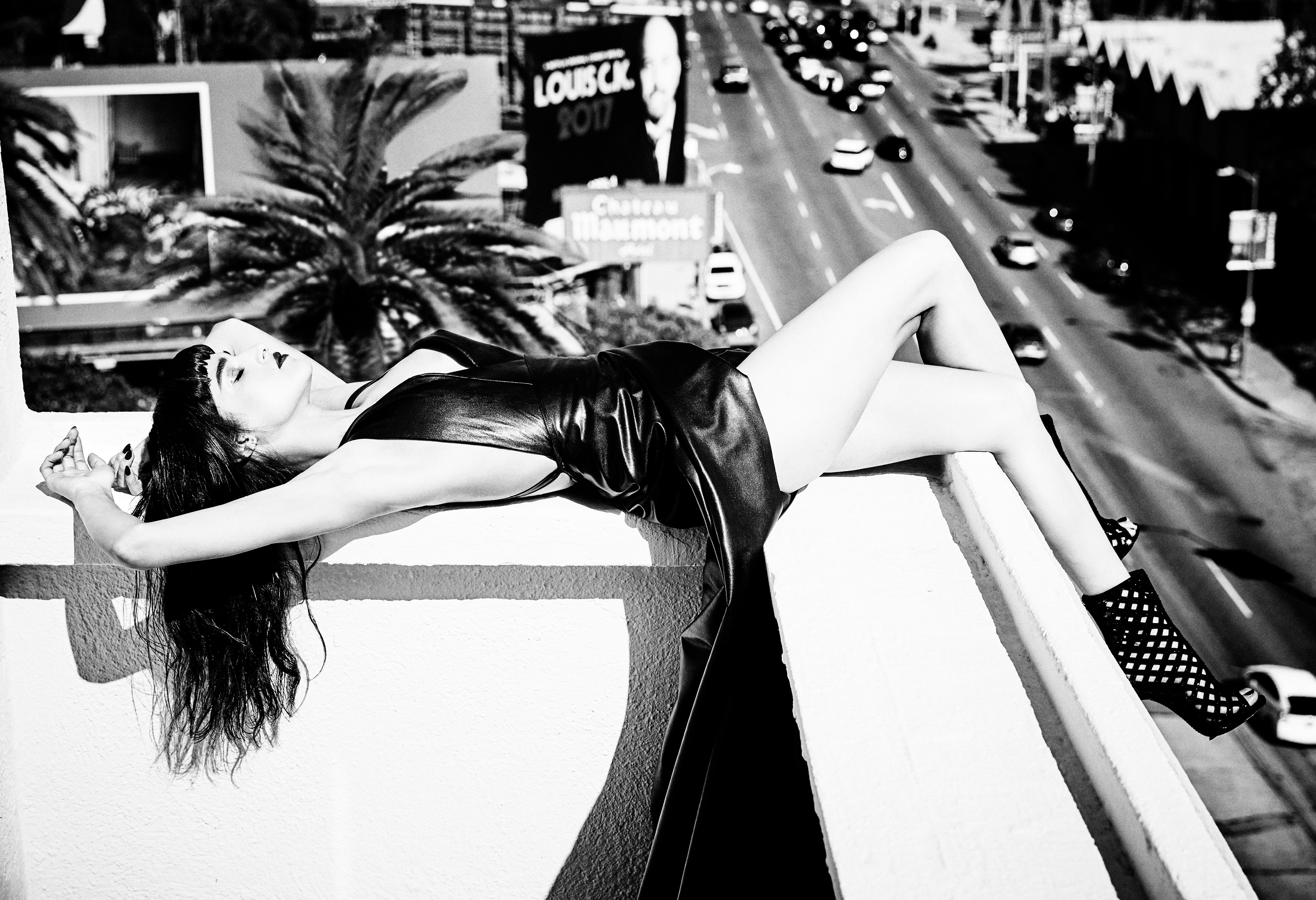 Dress by J GERARD and Shoes by Giuseppe Zanotti
Dress by J GERARD and Shoes by Giuseppe Zanotti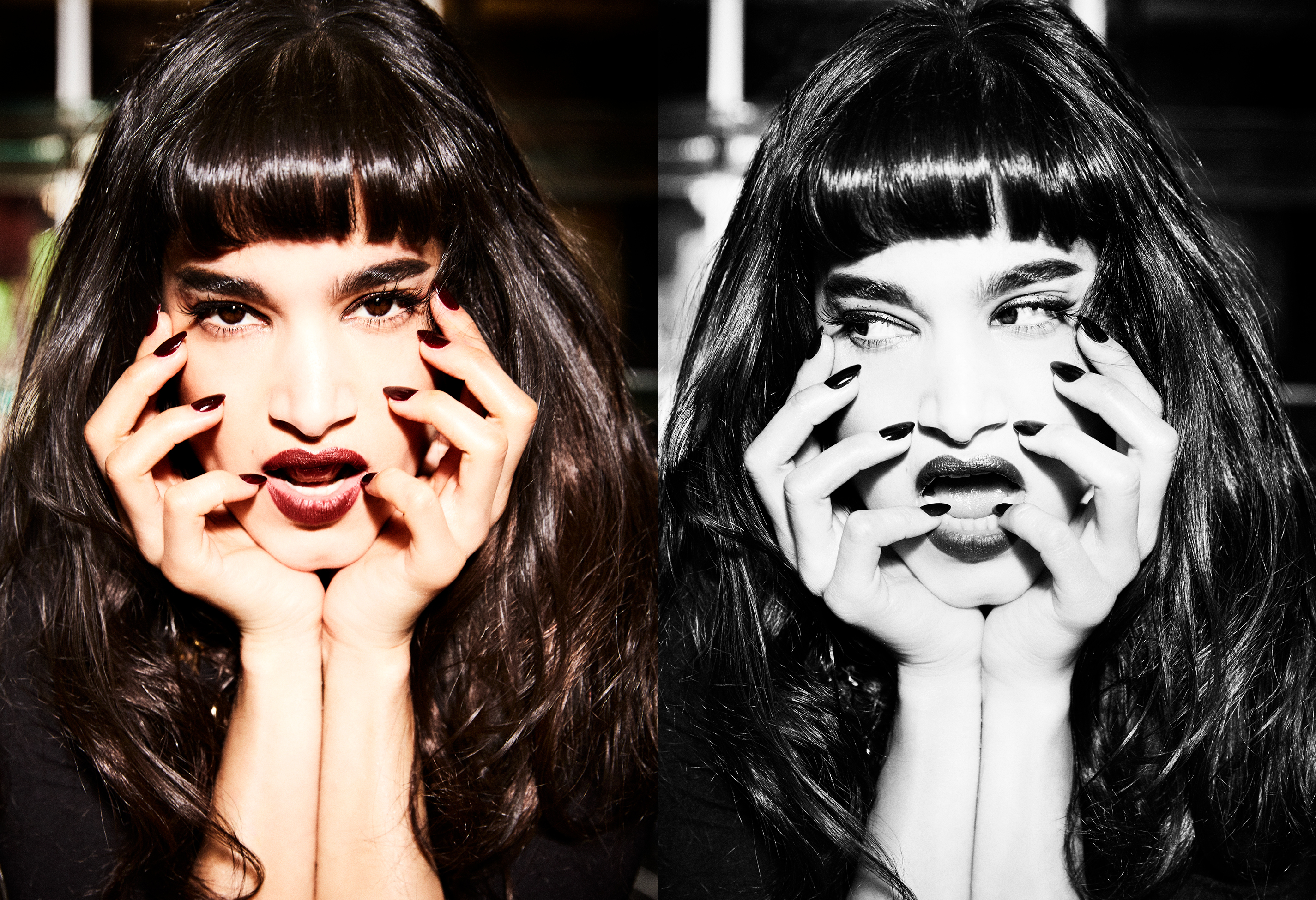
 Left: Chain Top by Natalie Fedner, Skirt by Versus Versace, Leather Jacket (worn inside out) by GUCCI, Lipstick by Chanel
Left: Chain Top by Natalie Fedner, Skirt by Versus Versace, Leather Jacket (worn inside out) by GUCCI, Lipstick by Chanel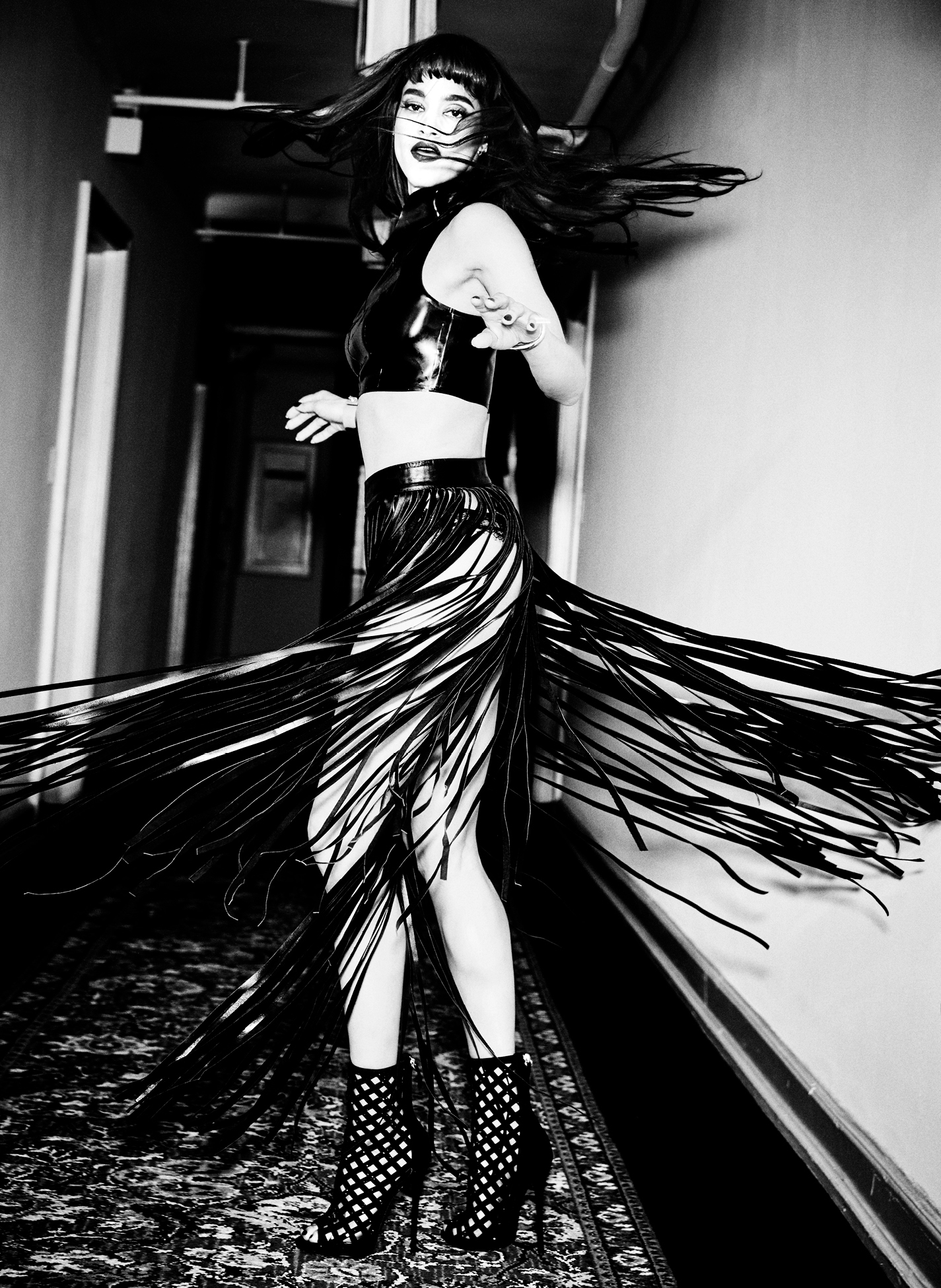 Top by Dead Lotus Couture, Skirt by Zana Bayne, Underwear by Morgan Lane, Shoes by Giuseppe Zanotti, Silver Cuff by Eddie Borgo, and Gold Cuff by Jennifer Fisher
Top by Dead Lotus Couture, Skirt by Zana Bayne, Underwear by Morgan Lane, Shoes by Giuseppe Zanotti, Silver Cuff by Eddie Borgo, and Gold Cuff by Jennifer Fisher